

What Golf Grips Do the Pros Use? Top 100 PGA Tour Player Guide (2023 update)
Written by Graeme Hay | Last Updated: 18/04/2024

While checking my clubs recently one thing I noticed was that I have a collection of different grips on my clubs.
Having swapped clubs in and out of my bag over the last number of years I’ve now ended up with different golf grips on my driver and fairway woods, compared to my irons and specialist wedges.
I had never really noticed it before and so prior to deciding whether to do anything about it I did some detailed analysis on what grips the top 100 pros on the PGA Tour are using to see what the best players on the planet are up to.
Golf Pride grips are the most used by the top 100 PGA Tour pros with 86% choosing them. Lamkin grips, used by Tony Finau and Justin Rose, are the next most common chosen by 6. IOMIC grips are picked by 4 pros while SuperStroke are used by Jordan Speith and Joel Dahmen. PING and Gripmaster grips are used by only 1 pro each.
Even though there seems to be a definitive consensus among the best players on the PGA Tour that Golf Pride are the best golf grips our research still found 25 different grip models being used by the top 100.
And when it comes to the number and types of wraps individual pros have under their grips it is obvious that the best players still have very detailed requirements when it comes to which grips feel and work best for them!
Most Popular Grips Used on PGA Tour? Golf Pride Take Pride of Place
The top 100 PGA Tour pros have a noticeable preference for Golf Pride golf grips and clearly consider them to be the best golf grips available to them.
Golf Pride (GP) Tour Velvet grips are the most used among the top 100 PGA Tour pros with 33 using them including Scottie Scheffler, Patrick Cantlay and Adam Scott. GP’s MCC grips are the next most popular with 19 using them including Rory McIlroy, Jon Rahm and Viktor Hovland. Tour Velvet Cord grips are chosen by 16 pros.
When we last did this analysis a couple of years ago Golf Pride grips were again shown to be the most popular among this elite group with 75% using them.
So with 86% now choosing them their dominance seems only to be growing.
But as we start to delve a bit deeper into the grip choices of the best players on Tour the precision with which they approach them is obvious and as exacting as it is with all their other equipment choices.
While the Tour Velvet grip continues to be the most popular choice among the top 100 on Tour fifty five of them choose other types of Golf Pride grips.
Rory McIlroy for example uses the MultiCompound (MCC) grip as does Jon Rahm and Viktor Hovland.
Tyrell Hatton meanwhile prefers the MCC Plus4 which is designed to simulate 4 additional wraps on the lower hand to encourage lighter grip pressure.
Sam Burns and Cameron Young then use the ALIGN versions of the Tour Velvet and ZGrip Cord grips respectively to help them ensure they place their hand correctly on the club every time.
In simple terms ALIGN refers to a raised ridge along each grip which allows a player to find a consistent ‘feel’ and therefore hand placement each time they pick up a club.
The great Tiger Woods meantime has preferred a standard 58 round Tour Velvet Cord grip during his career with one wrap of build up tape and 1 wrap of double sided tape applied underneath.
Others such as Taylor Pendrith, Andrew Putnam and John Huh also don’t use the same grip on all their clubs opting for different grip types on their woods and/or hybrids compared to their irons and wedges.
Pendrith for example chooses MCC grips for the longest clubs in his bag before switching to Tour Velvet Cord grips for his 3-iron through to 60º lob wedge.
It is unlikely that golf grips are ever the main topic of conversation in the clubhouse among amateur golfers across the world but it is clear from looking at the golf grips chosen by the top 100 PGA Tour players that it is something they pay close attention to.
So for the sake of completeness and satisfy any curiosity for which exact grips the top 100 pros on the PGA Tour are using here is a complete breakdown.
[Note – Just so you know, and we are upfront as an affiliate program participant, Golfing Focus, at no cost to you, earns from qualifying purchases made through links on this page.]
What Size Grips Do Pros Use? Don’t Forget the Wraps!
The golf grip is the only point of contact every golfer has with the club so it makes sense that it should never just be a case of any player simply living with whatever grip comes on the clubs they choose.
The best pros on the PGA Tour clearly don’t and our in-depth analysis of the golf grips used by the top 100 found that the pros clearly spend a great deal of time ensuring their grip is as comfortable and suited to them as possible.
And a key part of that relates to the size of grip the pros choose.
The majority of the top 100 PGA Tour pros use standard size grips, including Scottie Scheffler, Rory McIlroy and Justin Thomas. Others such as Sam Burns, Tony Finau and Jon Rahm use midsize grips, but each pro will also add varying amounts of tape under the grip to create a size that matches their specific requirements.
And that final point is the key one when it comes to discussions about the size of grips the pros use.

For some pros a midsize grip is too large for their liking but a standard size grip is too small.
That is why they will add extra wraps of tape underneath in order to get that grip size absolutely spot on.
Because the number of build up and/or double sided tape wraps a player uses under their grip gives it a different width and therefore size.
And not only that, the tape they use will give the club a different weight as will a cord grip which also means it is going to be a bit heavier.
2023 Masters champion Jon Rahm for example uses only 1 tape wrap underneath his midsize Golf Pride MCC grips but Scottie Scheffler uses 6 wraps of tape under his standard 58 Ribbed Golf Pride Tour Velvet grips.
Tony Finau meanwhile opts for a near unbelievable 13 wraps under the right hand and 12 under the left hand of his Lamkin UTX Midsize Full Cord grips.
That suggests Finau is gripping the branch of a small tree rather than a golf club but his reasoning for doing this is to try and produce a near uniform thickness from grip to shaft compared to the standard taper in the lower hand.
In other cases Tour pros will opt for extra tape wraps only under the lower half of the grip.
Xander Schauffele is one such player whose Golf Pride MCC grips get progressively larger as they reach his lower hand.
While the left hand of his grip is ‘standard’ size he opts for one 4-inch tape wrap followed by a 6-inch wrap under the right hand to help him slow down club rotation and start the ball right for his ideal shot shape.
As a general rule, adding 4 extra layers of tape (in addition to the 1 wrap of double-sided tape needed to adhere the grip to the shaft) will take a grip from an Undersize to Standard, Standard to Midsize, and so on.
And you should also take note that building up grips with extra tape will stretch the rubber and make it feel firmer.
So when you start looking at what sizes of grip the pros use bear in mind that the ‘manufactured’ size they are shown as choosing does not tell the whole story.
Do Pros Use Cord or Non-Cord Golf Grips?
Watch the PGA Tour for any length of time and it won’t take long before you notice the various multi-coloured golf grips that many of the pros have on their clubs.
While all the main golf grip manufacturers produce multi-coloured grips these days the most common coloured grip is the Golf Pride MCC (New Decade MultiCompound) which is a hybrid grip with a standard lower section and cord upper section.
[Editor’s note – Hybrid golf grips are also known as ‘half cord ‘ grips]

And when it comes to cord grips it is interesting to see what proportion of the PGA Tour pros use them.
28% of the top 100 PGA Tour pros use full cord grips with 19% choosing hybrid grips, which have a cord upper section and normal rubber lower section. The majority of the top 100, just over 50%, choose non-cord grips however and among this group Golf Pride’s Tour Velvet grip is the most popular.
By choosing MCC grips on his woods and Tour Velvet cord grips on his irons and wedges Taylor Pendrith was once again an anomaly with his choice of a mixture of full cord and hybrid grips in his golf set.
But why do some of the pros decide to go for cord grips, whether that is just for their top hand with the hybrid grips or for both hands with the full cord options?
Pros choose full or half cord golf grips because of the extra traction they give to stop the club spinning in their hands when their hands are sweating or they are playing in wet conditions. Cord grips absorb more moisture by virtue of the cord strands that are sandwiched and moulded between two thin layers of rubber.
The key word when it comes to golf grips is ‘feel’ and with cord grips they have a lightly sanded feel.
And it is this that adds the extra friction with a player’s hands when they grip the club compared to a standard soft non-cord rubber grip.
Like every golf swing however, every player is different when it comes to which golf grip types they prefer the feel of in their hands.
I used to use full cord grips in the past simply because I saw a lot of the pros using them however I found that due to the additional roughness they caused my hands a few problems, especially when I was practising and playing almost every day.
I therefore switched back to the non-cord grips and have stuck with them since simply because I prefer the smoother feel in my hands and I have never noticed any problems with my hands slipping due to sweat or in wet weather.
Every player is different though and personal preference clearly plays its part also among the top 100 players on the PGA Tour.
Before you go …
In the modern game of course it is not just club grips that are paid close attention to by the pros.
The options for putter grips available have also exploded in recent years as new manufacturers have burst onto the putting scene.
Read our next article to find out what putter grips the top 100 PGA Tour pros are using and find out which model of putter is the most popular among this elite group.
What Putter Grips Do the Pros Use?
Other top posts related to this article:
- What Clubs Do Pro Golfers Use? Top 100 PGA Tour Player Guide
- What Driver is Most Used On the PGA Tour? Top 100 Player Analysis
- The Fairway Woods Used by the Top 100 PGA Tour Pros
- What Hybrid Golf Clubs Do the Top 100 PGA Tour Pros Use?
- What Driving Irons do the Pros Use on the PGA Tour?
- What Irons Do the Pros Use? Top 100 PGA Tour Player Guide
- What Wedges Do the Pros Use? Top 100 PGA Tour Player Analysis
- What Putters do the Pros Use? Top 100 PGA Tour Player Guide
- What Golf Balls Do the Pros Use? Top 100 PGA Tour Players Breakdown
- What Shafts Do Pros Use? Top 100 PGA Tour Player Breakdown
- Do Pros Use Regular or Stiff Shafts? They’re Stronger Than That!
- Do Pros Use Graphite or Steel Shafts? It Depends Which Club
- Do Golf Pros Wear Metal Spikes? But They are Banned!
- Most Popular Driver on LPGA Tour? Top 50 Player Guide
- What Irons Do LPGA Players Use? Top 50 Pros Analysis
- What Golf Balls Do LPGA Players Use? Top 50 Player Breakdown
- What Drives the Senior Tour Pros? Most Popular Driver on Champions Tour
- From Tee to Green: Analyzing What Golf Balls Champions Tour Pros Use
- How Do Pros Hit the Ball So Far? It’s Not About the Equipment!
- Should You Have the Same Grips on All Your Golf Clubs?
Leave a Reply Cancel reply
Your email address will not be published. Required fields are marked *
Save my name, email, and website in this browser for the next time I comment.
RECENT ARTICLES

Behind Every Stroke: The Most Popular Putter on Champions Tour (2024)

Champions Hybrid Heroes. Most Used Hybrids by Champions Tour Pros (2024)

The Go-To Fairway Woods of Senior Tour Champions (2024)

Flexible Friends: Uncovering the Shafts Champions Tour Players Use (2024)

In the Bag: Unpacking the Clubs Champions Tour Players Use (2024)
LEGAL INFORMATION
This site is owned and operated by Golfing Focus Limited, a private limited company whose registered office is in London, UK. Golfing Focus Limited is a participant in the Amazon Services LLC Associates Program, an affiliate advertising program designed to provide a means for sites to earn advertising fees (at no cost to you) by linking to Amazon.com. Golfing Focus Limited also participates in other affiliate programs with the eBay Partner Network, FlexOffers, CJ.com, Svorn and other sites and is compensated for referring traffic and business to these companies (again at no cost to you).
Our Socials

Instruction
Golf 101: what is a strong grip.
What is a strong grip? Before we answer that, consider this: How you grip it might be the first thing you learn, and arguably the first foundation you adapt—and it can form the DNA for your whole golf swing.
The proper way to hold a golf club has many variables: hand size, finger size, sports you play, where you feel strength, etc. It’s not an exact science. However, when you begin, you will get introduced to the common terminology for describing a grip—strong, weak, and neutral.
Let’s focus on the strong grip as it is, in my opinion, the best way to hold a club when you are young as it puts the clubface in a stronger position at the top and instinctively encourages a fair bit of rotation to not only hit it solid but straight.
The list of players on tour with strong grips is long: Dustin Johnson, Zach Johnson, Bubba Watson, Fred Couples, David Duval, and Bernhard Langer all play with a strong grip.
But what is a strong grip? Well like my first teacher Mike Montgomery (Director of Golf at Glendale CC in Seattle) used to say to me, “it looks like you are revving up a Harley with that grip”. Point is the knuckles on my left hand were pointing to the sky and my right palm was facing the same way.
Something like this:
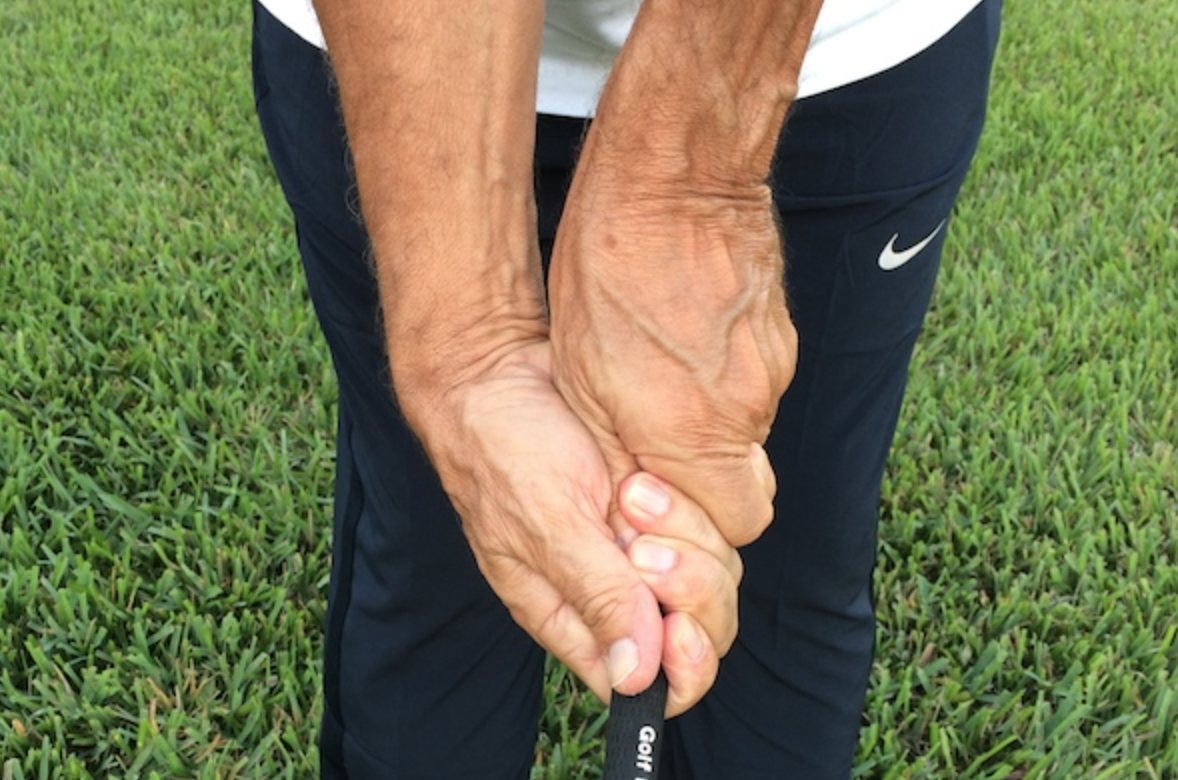
Of course, there are variations to it, but that is your run of the mill, monkey wrench strong grip. Players typically will start there when they are young and tweak as they gain more experience. The right hand might make it’s way more on top, left-hand knuckles might show two instead of three, and the club may move its way out of the palms and further down into the fingers.
Good golf can be played from any position you find comfortable, especially when you find the body matchup to go with it.
Watch this great vid from @JakeHuttGolf
In very simple terms, here are 3 pros and 3 cons of a strong grip.
- Encourages a closed clubface which helps deloft the club at impact and helps you hit further
- It’s an athletic position which encourages rotation
- Players with strong grips tend to strike it solidly
- Encourages a closed clubface which helps deloft the club at impact and can cause you to hit it low and left
- If you don’t learn to rotate you could be in for a long career of ducks and trees
- Players with strong grips tend to fight a hook and getting the ball in the air
Make Sense?

Confessions of a hacker: Chipping yips and equipment fixes
Clement: Driver lesson to max out distance and help you get fit properly
Chuckie Carlton
Aug 4, 2020 at 12:53 am
Can you please use the terms “further”/”farther” correctly? Not to be grammar police, but i see this misuse all the time particularly in this magazine’s articles. And, of course, this comes up all the time.
Your email address will not be published. Required fields are marked *
This site uses Akismet to reduce spam. Learn how your comment data is processed .

You may like
The wedge guy: the easiest-to-learn golf basic.
My golf learning began with this simple fact – if you don’t have a fundamentally sound hold on the golf club, it is practically impossible for your body to execute a fundamentally sound golf swing. I’m still a big believer that the golf swing is much easier to execute if you begin with the proper hold on the club.
As you might imagine, I come into contact with hundreds of golfers of all skill levels. And it is very rare to see a good player with a bad hold on the golf club. There are some exceptions, for sure, but they are very few and very far between, and they typically have beat so many balls with their poor grip that they’ve found a way to work around it.
The reality of biophysics is that the body moves only in certain ways – and the particulars of the way you hold the golf club can totally prevent a sound swing motion that allows the club to release properly through the impact zone. The wonderful thing is that anyone can learn how to put a fundamentally sound hold on the golf club, and you can practice it anywhere your hands are not otherwise engaged, like watching TV or just sitting and relaxing.
Whether you prefer an overlap, interlock or full-finger (not baseball!) grip on the club, the same fundamentals apply. Here are the major grip faults I see most often, in the order of the frequency:
Mis-aligned hands
By this I mean that the palms of the two hands are not parallel to each other. Too many golfers have a weak left hand and strong right, or vice versa. The easiest way to learn how to hold the club with your palms aligned properly is to grip a plain wooden ruler or yardstick. It forces the hands to align properly and shows you how that feels. If you grip and re-grip a yardstick several times, then grip a club, you’ll see that the learning curve is almost immediate.
The position of the grip in the upper/left hand
I also observe many golfers who have the butt of the grip too far into the heel pad of the upper hand (the left hand for right-handed players). It’s amazing how much easier it is to release the club through the ball if even 1/4-1/2″ of the butt is beyond the left heel pad. Try this yourself to see what I mean. Swing the club freely with just your left hand and notice the difference in its release from when you hold it at the end of the grip, versus gripping down even a half inch.
To help you really understand how this works, go to the range and hit shots with your five-iron gripped down a full inch to make the club the same length as your seven-iron. You will probably see an amazing shot shape difference, and likely not see as much distance loss as you would expect.
Too much lower (right) hand on the club
It seems like almost all golfers of 8-10 handicap or higher have the club too far into the palm of the lower hand, because that feels “good” if you are trying to control the path of the clubhead to the ball. But the golf swing is not an effort to hit at the ball – it is a swing of the club. The proper hold on the club has the grip underneath the pad at the base of the fingers. This will likely feel “weak” to you — like you cannot control the club like that. EXACTLY. You should not be trying to control the club with your lower/master hand.
Gripping too tightly
Nearly all golfers hold the club too tightly, which tenses up the forearms and prevents a proper release of the club through impact. In order for the club to move back and through properly, you must feel that the club is controlled by the last three fingers of the upper hand, and the middle two fingers of the lower hand. If you engage your thumbs and forefingers in “holding” the club, the result will almost always be a grip that is too tight. Try this for yourself. Hold the club in your upper hand only, and squeeze firmly with just the last three fingers, with the forefinger and thumb off the club entirely. You have good control, but your forearms are not tense. Then begin to squeeze down with your thumb and forefinger and observe the tensing of the entire forearm. This is the way we are made, so the key to preventing tenseness in the arms is to hold the club very lightly with the “pinchers” — the thumbs and forefingers.
So, those are what I believe are the four fundamentals of a good grip. Anyone can learn them in their home or office very quickly. There is no easier way to improve your ball striking consistency and add distance than giving more attention to the way you hold the golf club.
More from the Wedge Guy
- The Wedge Guy: Golf mastery begins with your wedge game
- The Wedge Guy: Why golf is 20 times harder than brain surgery
- The Wedge Guy: Musings on the golf ball rollback
Clement: Stop ripping off your swing with this drill!
Not the dreaded headcover under the armpit drill! As if your body is defective and can’t function by itself! Have you seen how incredible the human machine is with all the incredible feats of agility all kinds of athletes are accomplishing? You think your body is so defective (the good Lord is laughing his head off at you) that it needs a headcover tucked under the armpit so you can swing like T-Rex?
How a towel can fix your golf swing
This is a classic drill that has been used for decades. However, the world of marketed training aids has grown so much during that time that this simple practice has been virtually forgotten. Because why teach people how to play golf using everyday items when you can create and sell a product that reinforces the same thing? Nevertheless, I am here to give you helpful advice without running to the nearest Edwin Watts or adding something to your Amazon cart.
For the “scoring clubs,” having a solid connection between the arms and body during the swing, especially through impact, is paramount to creating long-lasting consistency. And keeping that connection throughout the swing helps rotate the shoulders more to generate more power to help you hit it farther. So, how does this drill work, and what will your game benefit from it? Well, let’s get into it.
You can use this for basic chip shots up to complete swings. I use this with every club in my bag, up to a 9 or 8-iron. It’s natural to create incrementally more separation between the arms and body as you progress up the set. So doing this with a high iron or a wood is not recommended.
While you set up to hit a ball, simply tuck the towel underneath both armpits. The length of the towel will determine how tight it will be across your chest but don’t make it so loose that it gets in the way of your vision. After both sides are tucked, make some focused swings, keeping both arms firmly connected to the body during the backswing and follow through. (Note: It’s normal to lose connection on your lead arm during your finishing pose.) When you’re ready, put a ball in the way of those swings and get to work.

Get a Better Shoulder Turn
Many of us struggle to have proper shoulder rotation in our golf swing, especially during long layoffs. Making a swing that is all arms and no shoulders is a surefire way to have less control with wedges and less distance with full swings. Notice how I can get in a similar-looking position in both 60° wedge photos. However, one is weak and uncontrollable, while the other is strong and connected. One allows me to use my larger muscles to create my swing, and one doesn’t. The follow-through is another critical point where having a good connection, as well as solid shoulder rotation, is a must. This drill is great for those who tend to have a “chicken wing” form in their lead arm, which happens when it becomes separated from the body through impact.
In full swings, getting your shoulders to rotate in your golf swing is a great way to reinforce proper weight distribution. If your swing is all arms, it’s much harder to get your weight to naturally shift to the inside part of your trail foot in the backswing. Sure, you could make the mistake of “sliding” to get weight on your back foot, but that doesn’t fix the issue. You must turn into your trial leg to generate power. Additionally, look at the difference in separation between my hands and my head in the 8-iron examples. The green picture has more separation and has my hands lower. This will help me lessen my angle of attack and make it easier to hit the inside part of the golf ball, rather than the over-the-top move that the other picture produces.

Stay Better Connected in the Backswing
When you don’t keep everything in your upper body working as one, getting to a good spot at the top of your swing is very hard to do. It would take impeccable timing along with great hand-eye coordination to hit quality shots with any sort of regularity if the arms are working separately from the body.
Notice in the red pictures of both my 60-degree wedge and 8-iron how high my hands are and the fact you can clearly see my shoulder through the gap in my arms. That has happened because the right arm, just above my elbow, has become totally disconnected from my body. That separation causes me to lift my hands as well as lose some of the extension in my left arm. This has been corrected in the green pictures by using this drill to reinforce that connection. It will also make you focus on keeping the lead arm close to your body as well. Because the moment either one loses that relationship, the towel falls.

I have been diligent this year in finding a few drills that target some of the issues that plague my golf game; either by simply forgetting fundamental things or by coming to terms with the faults that have bitten me my whole career. I have found that having a few drills to fall back on to reinforce certain feelings helps me find my game a little easier, and the “towel drill” is most definitely one of them.

Dave Portnoy places monstrous outright bet for the 2024 Masters

John Daly stuns fans into silence with brutal opening tee shot on PGA Tour Champions

Things got heated at the Houston Open between Tony Finau and Alejandro Tosti. Here’s why

Tiger Woods arrives at 2024 Masters equipped with a putter that may surprise you

Scottie Scheffler WITB 2024 (March)

Photos from the 2024 Arnold Palmer Invitational

Report: Tiger Woods has ‘eliminated sex’ in preparation for the 2024 Masters

Joaquin Niemann names 3 PGA Tour events he’d love to play each year ‘in a perfect world’

Spotted: Bettinardi irons at the Arnold Palmer Invitational

‘Seems suspect’ – PGA Tour pro hits out at decision to hand Adam Scott and Webb Simpson Bay Hill sponsor exemptions

Max Homa WITB 2024 (April)
Max Homa what’s in the bag accurate as of the Masters. Driver: Titleist TSR3 (9 degrees, D1 SureFit setting) Shaft:...

Bryson DeChambeau WITB 2024 (April)
Driver: Krank Formula Fire Pro (6 degrees) Shaft: Project X HZRDUS T1100 75g 6.5 Mini driver: TaylorMade BRNR Mini Driver...

Scottie Scheffler’s winning WITB: 2024 Masters
Driver: TaylorMade Qi10 (8 degrees @8.25) Buy here. Shaft: Fujikura Ventus Black 7 X (45 inches) 3-wood: TaylorMade Qi10 (15 degrees) Buy...

WITB Time Machine: Danny Willett’s winning WITB, 2016 Masters
Driver: Callaway XR 16 (9 degrees) Shaft: Mitsubishi Rayon Diamana W-Series 60 X Length: 45.5 inches 3-wood: Callaway XR 16 (15 degrees) Shaft: Mitsubishi...

Two star names reportedly blanked Jon Rahm all week at the Masters

Addiction, spinal fusion, and scam artists – Everything Anthony Kim revealed in candid interview with David Feherty

Anthony Kim says doctors told him that he ‘may not have much time left’ ahead of LIV return
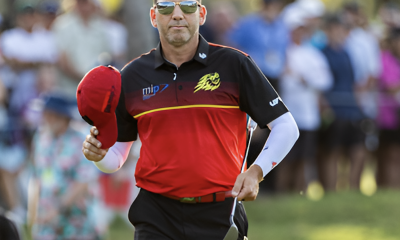
Brooks Koepka and Sergio Garcia make significant equipment changes as 2024 Masters looms
What Golf Grips Do Pros Use?
We take a look at the golf grips that are put into play by the top male players in the world.
- Sign up to Golf Monthly Newsletter Newsletter
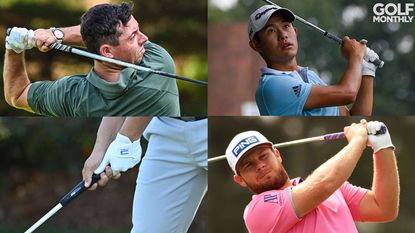
The grip is arguably the most important accessory in golf because it is the only part of you that is in contact with the club throughout the golf swing.
Therefore it stands to reason that if you have bad grips which are poorly fitted or incredibly slippery, then your chances of hitting a good golf shot are significantly less. Additionally if your mind is too busy thinking about making sure your hands don't slip off the golf club, then you aren't focusing enough on the shot you have to play either.
Tour professionals understand this and so they regularly check to ensure they are taking a perfect golf grip with their hands in the correct position. They also regularly get their clubs re-gripped because of how often they practice and use them during competition. They make sure they use models that feel comfortable for their hands and allow them to produce their best golf.
So what models do the top male players in the world use? Below we have taken a look and as you would expect, Golf Pride dominates here.
Also have you ever wondered what golf shoes do pros wear ? Then make sure you read our post on it.
Get the Golf Monthly Newsletter
Subscribe to the Golf Monthly newsletter to stay up to date with all the latest tour news, equipment news, reviews, head-to-heads and buyer’s guides from our team of experienced experts.

Golf Pride MCC Grip
Reasons to buy, reasons to avoid.
Golf Pride's Multi Compound is one of the best golf grips , and most popular models in golf right now because of the combination of performance and aesthetics.
Performance comes from the split design which blends Brushed Cotton Technology in the top half of the grip, to help with better traction with the glove hand, with rubber in the lower half to add more feel and forgiveness.
Of course the grips come in lots of different colors and as you can see above several top players use a variety of designs. You can also get the grip with the cool MCC Teams designs as well.

Golf Pride Tour Velvet Grip
This all-rubber grip is the No.1 in the game and is arguably the most classic looking.
It combines a rubber-blend compound with a computer-generated non-slip surface that makes it as playable and comfortable as possible.
The plus-sign texture also helps pull moisture away from surface to allow for consistent traction.
In short it keeps things simple and classy.

Golf Pride Z-Grip Cord Grip
Two-time Major winner Collin Morikawa is one of very few players to opt for the Z-Grip model from Golf Pride.
One of the firmest grips from the brand, it has two layers of texturing for feedback and control, and the midsize has a deep ‘Z’ shaped pattern that winds around the grip while the heavy cord texture channels any moisture away.

Golf Pride Tour Velvet Cord Grip
Used by Major winners Thomas and Koepka , the Tour Velvet Cord is also a top performer from Golf Pride.
It has all of the exceptional traction and all-weather performance that has made the Tour Velvet the winningest cord grip on Tour but now comes in a new white material comprised of tightly woven black cotton fibre.

JumboMax UltraLight XL Grip
Bryson DeChambeau does things his way and his grips are the same, as he opts for a huge model from JumboMax.
The JumboMax premise is that they have designed grips to fit your hands better to improve your ball striking by eliminating the tension. They use something called Finger-Palm technology so you don’t feel the need to squeeze, and Bryson was actually involved in the latest design.
In 2019 the US Open champ got rid of 75g from his JumboMax grip and this proved to be a prototype of this, the UltraLite. The substantial taper profile is designed to keep the face square longer through impact and the larger profile means that you will grip it more evenly and feel more of the weight in the clubhead.
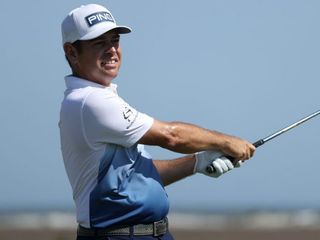
SwitchGrips ER Grip
A less well-known brand compared to others on this list is SwitchGrips, a company that is used by South Africans Oosthuizen and Ernie Els.
The 2010 Open champion uses the ER grip which is made from a proprietary rubber compound that has a non-slip texture on it for comfort and playability.
What is interesting is that SwitchGrips actually have weights in them in the butt of the club and these can range from 4g to 20g, dependent on a players feel and need. We are unsure which weight Oosthuizen has in, but because the butt of his club is black we can assume it is the standard design.

Golf Pride Tour Velvet ALIGN Grip
Featuring much of the performance of the Tour Velvet model above, the Align design features Align technology and is used by American Harris English.
This takes the form of a dedicated raised ridge which encourages more consistent hand placement and better clubface awareness so the days of shifting your hands around and wondering if you’re too weak or strong will be over.
It also has the most up-to-date rubber blend and non-slip surface pattern to get rid of any unwanted moisture.

SuperStroke S-Tech Grip
SuperStroke may be best known for putting grips but three-time Major winner Jordan Spieth also uses club grips from the brand too, the S-Tech’s.
This grip is particularly good in all weather and there is minimal taper here, which helps with being able to have more even hand pressure on the grip and square the club more naturally.
It has a soft, tacky feel, hence its ability to deal with inclement weather, and it’s another that looks great; whether that is if you go for the blue, grey or red. It also comes in black naturally.

Golf Pride MCC Plus4 Grip
Tyrrell Hatton turned many heads when he showed up with purple grips in 2021. The exact model he uses is the MCC Plus4 grip and whilst the purple model is not on sale, there are still several colors for you to choose from.
The design is also worth mentioning here as it differs from most on this list.
The larger outside diameter of the grip simulates the feel of building up the grip with four extra wraps. This reduced taper encourages lighter grip pressure, promoting less tension in the hands and creating more fluidity and power throughout the swing

Golf Pride Tour Wrap Grip
American Daniel Berger opts for the Tour Wrap Grip from Golf Pride which is not commonly seen out on Tour. It features a wrap design that combines the look and feel of leather but has the durability and performance of soft rubber.
Not only that but the wrap design allows your fingers to nestle nicely between each section of the wrap.
Berger may use the black option but with the 2G model you can get it in white, blue and red as well.
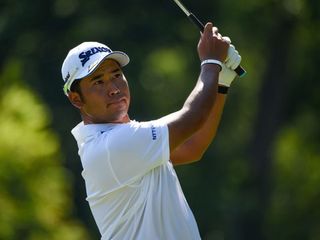
Iomic X Grip
Japanese Masters champion Hideki Matsuyama uses Iomic X grips at the moment.
Available in several different colors they feature a more rounded profile to enable the grip to fit into the palms correctly, reducing grip pressure.
For more Tour player gear, check out the Golf Monthly website.
For all the latest from the golf world, follow our social media channels Facebook , Twitter and Instagram
Have you thought about taking out a subscription to Golf Monthly magazine?
Subscriptions are available in both print and digital editions through our official online shop Magazines Direct and all postage and delivery costs are included.
- Golf Monthly is packed with all the information you need to help improve your game.
- Take your game to the next level with tips, drills and advice from top Tour Pros and the UK’s top coaches.
- Impartial in-depth reviews of the latest equipment will ensure you buy the best whatever your budget
- If you are looking to venture away with friends Golf Monthly will give you plenty of ideas of where to play and stay.
A golfer for most of his life, Sam is Golf Monthly's E-commerce Editor.
Working with golf gear and equipment over the last six years, Sam has quickly built outstanding knowledge and expertise on golf products ranging from drivers, to balls, to shoes.
He combines this knowledge with a passion for helping golfers get the best gear for them, and as such Sam manages a team of writers that look to deliver the most accurate and informative reviews and buying advice. This takes the form of buying guides, reviews, supporting gear content as well as creating deal content.
This is so the reader can find exactly what they are looking for, at a good price.
Sam now spends most of his time testing and looking after golf gear content for the website, whilst he is also responsible for all content related to golf apparel.
Additionally Sam oversees Golf Monthly voucher/coupon content which seeks to find you the best offers and promotions from well-known brands like Callaway, TaylorMade and many more.
Unfortunately, Sam is not a member of any club at the moment but regularly gets out on the golf course to keep up the facade of having a single-figure handicap.
Sam's What's In The Bag:
Driver: Cobra LTDxLS (9 degrees)
Fairway Wood: Ping G430 Max (15 degrees), Nike Covert Tour 2.0 (19 degrees)
Irons (4-PW): Titleist AP2
Wedges: Titleist Vokey SM7 54˚, 58˚
Putter: Scotty Cameron Phantom X 5.5
Ball: Srixon Z-Star Diamond
Shoes: G/FORE Gallivanter / Nike Air Zoom Victory Tour 3 / Cuater The Ringer (For off the course he goes for Nike Jordan 1 Low G shoes as well)

The Canadian leads going into Sunday, as an interesting final day is in store at TPC Craig Ranch
By James Nursey Last updated 5 May 24
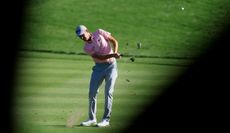
Webb Simpson is set for another Signature Event appearance, despite the American currently sat 143rd in the FedEx Cup standings
By Matt Cradock Published 5 May 24
- Contact Future's experts
- Terms and conditions
- Privacy policy
- Accessibility statement
- Cookies policy
- Advertise with us
Golf Monthly is part of Future plc, an international media group and leading digital publisher. Visit our corporate site . © Future Publishing Limited Quay House, The Ambury, Bath BA1 1UA. All rights reserved. England and Wales company registration number 2008885.
What is a Strong Golf Grip and Can It Improve Your Game?

Mike has been involved with sports for over 30 years. He's been an avid golfer for more than 10 years and is obsessed with watching the Golf Channel and taking notes on a daily basis. He also holds a degree in Sports Psychology.
View all posts by Mike Noblin
I’ll never forget when I learned what a strong grip was from a golf instructor. During our first lesson, he noticed that most of my golf shots tended to slice to the right. He proceeded to tell me that the simplest fix for my slicing was to start using a strong golf grip.
There are several reasons why golfers should use a strong grip. We describe the strong grip here along with how it can help your game. After reading this you’ll be able to decide if a strong grip may work for you.
What is a Strong Golf Grip?
A strong golf grip has nothing to do with how hard you grip the golf club. Instead, it has to do with the position of your hands. A strong grip requires the golfer’s hands to be rotated away from the target.

Image courtesy of Golf Distillery
How do you know if your golf grip is already strong? Check the position of your knuckles on your left hand. If you can see three or more knuckles, you are already using a strong grip.
Folks with a strong grip normally use one of two finger patterns: the interlocking grip or the overlapping grip.
With the interlocking grip, the golfer takes the right pinky and interlocks it with the left index finger. With the overlapping grip (aka the Vardon grip), the golfer takes the pinky of the right hand and simply rests it on top of the index finger of the left hand. The choice to overlap or interlock all comes down to the golfer’s personal choice.
Is a Strong Grip Good in Golf?
No golf grip is inherently good or bad. It all depends on what type of golf swing you have. The most important thing is to match your swing type with the correct grip. It’s best to spend lots of practice time using each grip to see which one works best for you.
Just as with the weak and neutral grips, the strong grip has its own set of positives and drawbacks. Here is a brief list of the pros and cons of the strong grip.
Pro #1: Could Lead to Increased Distance off the Tee
Switching to a strong golf grip puts the hands in a more powerful position. This could lead to more yardage off the tee with the driver. The ability to hit the ball further can lead to lower scores on the course.
The strong grip also makes the golf club feel much lighter, which helps generate a little more clubhead speed. With the club feeling lighter, the golfer has better control of the shaft. More control of the golf club often leads to more accurate shots and extra distance .
Pro #2: Helps to Straighten Out Slicers
Most amateur or beginner golfers fight a slice, especially with the larger clubs like the driver, fairway woods, and hybrids. A strong grip helps remedy this common problem. Here’s how:
The strong grip makes it much easier to close the clubface on impact. This is in stark contrast to the weak and neutral grips, which usually make it too easy to hit the ball with an open clubface. The open clubface is what causes the slice.
Pro #3: Promotes an In to Out Swing Path
The strong grip also encourages an in-to-out swing pattern, which not only helps remedy a slice but makes it easier to hit draws. This is because of the aforementioned closed clubface at impact. The ability to hit a draw can be a huge advantage on the golf course, especially on the holes that have a dogleg left shape to them.
Con #1: Can Result in Hooking
For golfers who have no trouble closing the clubface at impact, a strong grip can lead to hooking. This is not a good thing on the course and can result in lots of lost golf balls and frustration. A wicked hook is just as bad as a nasty slice because neither one will end up in the fairway.
Con #2: Lower Ball Flight
While most golfers, especially slicers, may welcome a lower ball flight, that is not the case for all golfers. The closed clubface that the strong grip promotes usually leads to less trajectory. This isn’t such a problem with the longer clubs but it can negatively affect some golfers’ approach shots with wedges.
Con #3: Less Comfortable
This one comes down to personal preference, as some golfers think the strong grip is more comfortable than the weak or neutral grips. However, some golfers report that their hands get quite a bit sore after switching to a strong grip. This could be due to the extra wrist rotation that occurs with a strong grip.
Many golfers find the strong grip to be very uncomfortable while chipping and putting. For this reason, lots of golfers will use a strong grip for normal shots but a neutral grip for short game shots.
Professional Players Who Use a Strong Golf Grip
There are tons of golfers on the PGA Tour that use a strong grip. Many of which are some of the game’s biggest stars. This just goes to show that a strong grip is not just for beginner golfers.
Dustin Johnson
DJ is one of the best players in the world and has been for quite some time. Johnson has racked up 24 PGA Tour wins, two of which are major championships. The 37-year old uses one of the strongest grips in pro golf because of his 6-4 frame and very large hands.
The strong grip helps keep Johnson’s hands quiet, which allows for his brute strength and extreme flexibility to pummel the golf ball well over 300 yards. Johnson’s strong grip enables him to keep his connection with the golf club throughout his entire swing.
Zach Johnson
Though Zach Johnson has no relation to Dustin Johnson, they both employ a strong golf grip. The 45-year old has won 12 times on the PGA Tour, including two major championship titles. What is interesting about Johnson’s grip is that it is even stronger than DJ’s, as both of his thumbs are pointed at his right shoulder.
Johnson may not be one of the longest drivers in pro golf, but he is one of the most accurate. The strong grip and excellent body rotation help Johnson make consistent contact, both off the tee and with his approach shots.
Bubba Watson
We had to put a lefty on our list and Watson is one of the best out there. The former University of Georgia star has used a strong golf grip his entire career. Watson turned pro in 2002 and has won 12 times on the PGA Tour.
Watson’s greatest achievements are his two victories at The Masters Tournament in Augusta, Georgia. Watson keeps his hands in an extremely strong position, which is pretty uncommon amongst left-handed golfers. Being unconventional has never bothered Watson.
Fred Couples
Couples was one of the most dominant golfers on the PGA Tour in the 1990s. “Boom Boom” won 15 times on the PGA Tour and captured the coveted Masters Tournament title in 1992. Couples still plays on the PGA Tour Champions and his grip is so strong that his wrist cups.
Though he uses an extremely strong grip, Couples only grips the golf club with a small amount of grip pressure. By lightly holding the club, Couples is able to generate his signature smooth swing. This proves that golfers with a strong grip can still have a nice smooth rhythm to their swing.
Paul Azinger
We can’t mention strong grips without talking about the man with the strongest golf grip of all time. “Zinger” had what is called an ultra-strong grip, which is where you can see all four knuckles on the lead hand. Azinger’s right hand was much more underneath the golf club than most golfers.
The extremely strong grip didn’t hurt Azinger’s career in the least. The Florida State University alum scored 12 wins on the PGA Tour, including the 1993 PGA Championship. Azinger is now one of the most popular commentators on the Golf Channel.
Who This Grip is Best Suited For
Lots of golfers can benefit from trying out a stronger grip. However, a strong grip is not for everyone. Check out the below list for the folks that may benefit the most from a strong grip.
- Golfers who struggle with a slice
- Golfers who want to increase their driving distance
- Folks who want to hit more draws
- People who want more control during their backswing
- Golfers who have trouble closing the clubface
- Those who need to make more consistent contact
- Those who want a swing that relies less on timing
- Folks with fast hips
The Other Types of Golf Grips
Have you tried the strong grip in the past and didn’t feel comfortable with it? If that is the case, consider using a weak grip or a neutral grip. Here’s a brief rundown of each of those.
Weak Golf Grip
The weak grip is the exact opposite of the strong grip. Instead of both the right thumb and left thumb pointing at the right shoulder, with the weak grip they point at the left shoulder. With a weak grip, the golfer will only see one knuckle on their left hand while addressing the golf ball.
Golfers who love the weak grip claim that it helps them hit the ball a lot higher than the other two grips. PGA Tour pros like Jon Rahm use the weak grip to hit those long, power fade drives. A weak grip normally works well for golfers with slow hips.
Neutral Golf Grip
The neutral grip is a happy medium between the weak and strong grips. With a neutral grip, the thumbs point right at the golfer’s face instead of either his right or left shoulder. Golfers with a more medium hip speed may benefit the most from a neutral grip.
When using a neutral grip, the golfer will be able to see two knuckles on his left hand during his setup. The neutral grip usually works best for golfers with excellent swing mechanics. PGA Tour legends Jack Nicklaus and Tiger Woods are both big proponents of the neutral golf grip.
Leave a Reply Cancel reply
Your email address will not be published. Required fields are marked *
Save my name, email, and website in this browser for the next time I comment.
Mike Noblin

Golf Workout Program is reader-supported. When you buy through links on our site, we may earn an affiliate commission.
Recent Posts
- Where Should You Position The Ball When You’re Putting?
- What is a Duck Hook in Golf (& How to Stop Hitting Them)
- Do Golf Balls Ever Go Bad? (Plus How Often to Replace Yours)
- Bump and Run in Golf: What It Is, When to Use & Drills to Try
- The Taylormade TP5 vs TP5x: Head-to-Head Comparison for 2024
- 5 Best Golf Balls for People with Slow Swing Speed
- 9 Best High Visibility Golf Balls – Never Lose a Ball Again!
- 60 Degree Wedge: What It Is, When to Use it, & Best Brands
- 4 Best Biodegradable Golf Balls for The Eco-Conscious Golfer
- Where Are TaylorMade Golf Clubs Made?
- 2008 Articles
- 2009 Articles
- 2010 Articles
2011 Articles
- 2012 Articles
- 2013 Articles
- 2014 Articles
- 2015 Articles
- 2016 Articles
- Translated Articles
Quick Links
- Online Video Analysis
- Fly-In Lessons
- My Online Store
- Golf Body Training Video
- Certification Course For Instructors
- 2011-07 : PGA Tour Grip Styles Part 1
PGA Tour Grip Styles Part 1
- by Kelvin Miyahira
Spanish Translation by Fabian Lozano Medina CLICK HERE
The most basic fundamental of all in golf is the grip. Everyone’s first lesson begins with how to put your hands on the club. But surely this is so simple that everyone gets it right. Just put your hands on the club and use a Vardon overlap, interlocking or ten-finger grip, set the “V’s” of your hands to your right collar and you’re ready to go right? Not so fast. Has anyone ever thought to check how the best players in the world really grip the club? I know I’ve taught for over 25 years and never bothered to re-examine nor verify the correctness of the grip I was taught by some of the “best” teachers in the world. And can your grip affect your impact position and the type of release you have? Ohhhhhhhhhhhhh yeah!!!!!!
After a survey of over 200 tour players from around the world, I’ve found some correlations in gripping the club that definitely influences the type of release you will have. So if you’re a flipper, slicer, fader, hooker or struggle with inconsistency, there are a few key points to follow and you can immediately improve your ballstriking. But first, a little history.
History of the weak and neutral grip
There was a young golfer who possessed all the power in world but fought a nasty hook. He couldn’t win on tour with the hook much less one of the coveted majors. Ahhhhhh, but then he figured out how to hold the club so that he had virtually no chance of hooking it ever again. Shot after shot became a small fade and the legend grew as he won many golf tournaments including nine major tournament victories. The legend of course, was Ben Hogan and he figured out by using a weak left hand grip he would never hook. His left thumb was straight down the top of the shaft with a short thumb and that worked like magic for him.
But his right hand was also in a “weak” position with his “V” pointing to his chin. And with the successful sales of his “Five Lessons: The Modern Fundamentals of Golf” book, Hogan influenced the way millions of golfers gripped the club.
While this may have worked perfectly for Hogan, could this be the reason that many have tried and failed at copying Hogan? And to the millions of golfers that are hitting weak fades or slices, why would you copy the grip of a player that doesn’t have the same problems you face? And even if you are fighting a hook and have a strong grip, is the only answer a weak grip?
Regardless of following logic or not, we have a huge inclination towards the weak grip. Next comes David Leadbetter with his ground-breaking book in 1990, “The Golf Swing” and riding on Nick Faldo’s success, he definitely set the tone for the next few decades that the “neutral grip” should dominate golf. But the problem is that Leadbetter promoted a weaker grip than what Faldo actually used.
Here’s Faldo with a somewhat strong looking grip.
Now compare that with Leadbetter’s grip. As you can see there are obvious difference between the grip Faldo used and what Leadbetter promotes. So the question as always is, “Do we copy what the great golfer did or do we listen to what the interpretation of the teacher is?” To me the answer is obvious but millions of golfers are answering the question differently.
What We’re Taught
When learning your grip, you probably were taught that there was an interlocking grip, overlap grip and a ten-finger grip. Then you were most likely taught to have a “neutral” grip. Strong grips were thought to be bad in that it might lead you to hooking. Weak grips are thought to produce slicing or fading. Since most people want to hit it straight, the neutral grip is the logical choice.
But is it possible that all of these assumptions about the grip are based on the idea that all golfers flip/roll their hands through impact? Of course, if you have a strong grip and flip or roll your hands, the likelihood of hooking is pretty high. But what if you don’t intend on flipping it?
Or what if you are intent on ridding yourself of the flip and have a weak grip, might it be possible that there is no way you will overcome this since the clubface will always tend to be very open and necessitate a flip/roll release just to have a chance to put the ball in the fairway?
Strong Argument for a Stronger Grip
Jack Nicklaus, who also played a power fade, used a neutral left hand grip and a strong right hand grip.
Sam Snead looks like he used a slightly strong grip.
Arnold Palmer used a very strong grip and had a closed clubface at the top.
If you’ll remember former world #1 David Duval’s grip, he had a very strong grip and a closed clubface at the top. But he didn’t flip it! So he didn’t hook. He instead played a power fade. Just like Lee Trevino did with his extreme strong grip.
But Duval, giving in to criticism of his swing and his “unusual clubface positions” he tried to change with the “help” of Leadbetter, then Hank Haney and then what? His game disappeared. Now that he’s decided to go back to his old swing and grip, he’s playing much better.
Greg Norman played with a slightly closed clubface and slightly strong grip when he was #1 in the world.
Others with strong grips
Tom Watson, in his prime also had a strong grip and a closed clubface and won many majors. Paul Azinger, Fred Couples, Bernhard Langer, Payne Stewart, Lee Janzen, Hubert Green, Bob Tway and others had strong grips and won major tournament titles.
So where did this notion of what a square clubface is at the top of the backswing come from and who said it is the optimal way to play golf? Is it possible that this is just someone’s interpretation or that Hogan’s way is the best way? How do we know what’s right?
Even Tiger Woods played his best golf with a slightly closed clubface and a strong grip. So maybe the record speaks for itself?
Of course he can weaken his grip and open the clubface but play worse...
Thus, given all these players with strong grips and were great champions, why is it that the strong grip has such a negative connotation to it?
If left to Lead, we’d all be flippers with neutral grips. If left to Haney, we’d all be flip/rollers with neutral to weak grips.
The Research Findings
After another exhausting research project on over 200 PGA tour pros, I have found that the grip that is most commonly used, is what we would once have termed a “strong grip.” At least 60% of the tour pros use this grip so I’m going to call it the “standard strong” grip. Then there are about 20% that use an extremely strong grip or as one tour pro called it, the “Harley Grip.” Thus, 80% of the tour players are using either a standard strong grip or an extreme strong grip.
Then only 10% of the players used a weak or neutral grip consisting of both hands in the weak or neutral position that Leadbetter promotes.
The final 10% of the players are using a combination of either strong left/weak right or weak left /strong right hand grip.
Therefore, the neutral grip that is almost universally taught, is used by only a small percentage of the tour pros. Could it be that they succeed because they don’t listen??? But for the millions of golfers worldwide that are “good students” who listen, they are in for a lifetime of endless struggle.
Determining Strong, Standard or Weak/Neutral
Perhaps a little understanding of what these classifications really mean is in order. A strong grip means that the clubface will have a “closed bias.” A standard grip means that the clubface will have a “square bias.” And a weak grip will have an “open bias.”
It does not mean that every strong grip player will have a hook or every weak grip player will have a fade or slice. Better players will compensate better. Poorer players will succumb to the closed or open predisposition of the clubface position that the grip inclines toward mainly because they flip and roll their hands.
ASSESSING THE LEFT HAND GRIP
Radius Bone and Midline of the shaft
For years, we have counted the knuckles on the left hand to determine what type of left hand grip (strong, neutral, weak) you have. But the direction the shaft points at address can alter the appearance of the grip. See below. If you take a grip with the shaft pointing to your navel, then shift the hand position forward without changing your grip, the grip will now look weaker since you won’t be able to see as many knuckles. So this is not a good way to classify grips.
So obviously there needs to be a better way to classify the grip and that would be to draw a line up the midline of the shaft (from front view) and see where the radius bone of the left forearm is in relation to the shaft.
Here’s the radius bone of the left hand pictured from target line view. In the address position, your radius bone will be in the superior (top) position.
By using this line, it minimizes the different shaft positions as you can see. In both cases, his radius bone is just to the golfer’s right of the line (away from target).
Here’s Nick Watney with the line drawn along the midline of the shaft and through the grip, one can see the radius bone is clearly on the right side of the shaft or away from the target. This would be considered an extreme strong left hand grip.
Here’s Chris DiMarco with a weak left hand grip. You can clearly see the radius bone is to the left or toward the target in relation to the midline of the shaft.
A standard grip is shown by a younger Tiger. The midline of the shaft runs right through the radius bone.
Left Elbow Position: Internal or External Shoulder Rotation at Address
Another factor that affects the strength of the left hand grip is the position of the left elbow. If the left elbow is pointing toward the target, this will make the grip even stronger (closed clubface bias). This means the left shoulder starts at address in an internally rotated position.
Here’s Martin Laird’s with a strong left hand grip. But his left elbow is pointed more back toward the left hip. This means his left shoulder is externally rotated at address. This is something that Hogan used to help alleviate the hook albeit with a far weaker grip. I shall explain why this is so later in the article.
But if you take a weak/neutral grip, then rotate the left elbow to point toward your left hip as Leadbetter is showing here, that makes the grip even weaker!!! Unless you’re a hooker, this grip and left arm position should be avoided and even then you may need to reconsider it.
ASSESSING THE RIGHT HAND GRIP
Using the “V” of the right hand to determine whether strong or weak is very difficult for the same reason as using knuckles of the left hand.
Here’s Kaleo again demonstrating a neutral grip in two ways. First with the hands centered, then with the hands ahead. Again, the same grip will appear to be weaker when the hands are more forward at address.
With no change in the grip, his right hand “V” could be anywhere from pointing to his collarbone or almost to his left shoulder. So it can’t be the only way to determine how your right hand is gripping the club.
But if you see a centered shaft position (pointing close to navel) like Richard S Johnson and a “V” pointed to the left shoulder, that’s weak.
Bowed, Flat or Cupped Right Wrist
Another way to help determine grip strength would be whether the right hand is in a bowed, flat or cupped position at address.
Boo Weekley displays a strong right hand grip with a bowed position. The “V” on his right hand is pointing near his right hip.
Sean O’Hair has a more standard right hand grip that has a flat wrist position.
Rickie Fowler has a cupped right wrist at address. His “V” might be pointed similar to Sean’s but due to the cupped wrist position, it is a bit weaker.
Right Forearm: Supinated or Pronated
Closely related to the bowed or cupped position of the right wrist is the right forearm position.
Dustin Johnson has his right forearm in a slightly supinated position. This also affects his right shoulder which appears to externally rotated. This makes the grip a bit stronger.
Camilo Villegas looks even more supinated in the right forearm. His right elbow is pointed back toward his right hip. This shows some right shoulder external rotation at address. This makes his grip stronger.
Contrast that with the right forearm of Ernie Els. His right arm is slightly pronated and his shoulder is slightly internally rotated judging by the position of his right elbow pointed slightly away from the target. This makes his grip a bit weaker.
Straight-hitting Jim Furyk has his forearm in a neutral position.
Right Index Knuckle Position
The index finger’s metacarpophalangeal joint (MCP joint) can also give you an idea of where your hands are on the club.
Here’s a close up of Jamie Sadlowski’s grip.
Here’s Nick Watney with his MCP joint right on the side of the shaft. This would be a strong position.
Rickie has his MCP joint way on top. This is a weak position.
Anthony Kim has it somewhere in between. And this would be still slightly weak.
Ulnar or Radially Deviated
If the wrist starts in UD, that is also going to weaken the grip.
Or if in slight radial deviation as Trevor Immelman is in, it will be a bit stronger.
Putting the Squeeze?
This is a Hogan idea. Not that there’s anything wrong with that... but only if you’re a hooker and even then this might not be the easiest way to golfing nirvana. The right thumb squeezing together with the MCP joint. By squeezing them together, we have now put the MCP joint on top of the shaft instead of at the 3 o’clock position. This MCP position plus the weak right hand position might be the deepest root cause of a flip. I’ll show why later.
Again, over 80% of the tour pros are not using this type of right hand grip. Still want to use it?
To further classify the right thumb position, see if the right thumb is parallel to the right forearm or not. Hogan’s has the cupped angle.
Here’s Matt Kuchar with a parallel thumb and forearm.
Bubba has a stronger grip so his right thumb to forearm has a more bowed appearance.
Latest anti-instruction star Tommy Gainey has an even stronger right hand grip than Bubba.
Right Thumb Pressure
By squeezing like Hogan says, you are contracting or activating the extensor muscles of the thumb and forearm. Is this a good thing?
Compare that with holding the club this way, the forearm flexors are activated on the backswing. Specifically it is the flexor pollicis longus muscle that flexes the thumb. If you’ll take a close look at the thumbnail of Laird’s hand (used mainly because it is the best closeup of a strong grip I have), you can see that it is pointed down or being flexed. If you’ll look at Hogan’s thumb, it is the opposite. It is being extended or the thumbnail is pointed up which points to a contraction of the extensor pollicis longus.
Tomayto, tomahto, what does this have to do with a golf swing?
If the forearm flexors are activated, you are more likely to get the “long and low” takeaway and if we take this a step further, the right forearm is supinated at address and will typically move in the opposite direction on the backswing... pronate. This means that the clubface will have a natural tendency to remain square or closed at the top of the backswing.
A close look at Nicklaus’ right thumb shows the thumbnail pointed down. As proof of the flexors being involved, Jack was King of the wide, one-piece takeaway.
Palmer’s thumb looks flexed as well.
But if you start with the right forearm extensors activated and the right forearm pronated, you will set the wrists early and supinate your forearm during the backswing. Remember Jeev Milkha Singh’s backswing? Could this have been at the root of this movement?
Pressures and the Opposable Thumb
From Encyclopedia Britannica:
The movement of opposition is a rotary movement in which the thumb, swinging about its own axis, comes to face the lower surface of the tips of the fingers. The opposable thumb is the basis of the precision.
Thus the correct grip might not be as Hogan said but it should be the grip more similar to a caveman grabbing a tree branch to bash a dinosaur away.
And perhaps Mr. Gainey might not be invited to any hoity-toity afternoon tea parties with the way he’d grab a teacup, but perhaps his grip is more appropriate for a game of golf?
Here’s a good view looking down the shaft without a clubhead. Sydni is gripping the club with a standard strong grip. The pressures from the fingers surround the shaft from all directions. All the fingers can pull the grip against the MCP joint of the index finger and the last knuckle of the thumb (distal interphalageal joint). This might seem like a crude way of holding the club versus pinching your right thumb and index finger together like Hogan, but read on and maybe I’ll change your mind.
If you’ll look at a weak grip, the index finger’s MCP joint is on top of the shaft. Maybe the middle and ring fingers can pull up against the thumb and MCP joint but it seems like there’s only gripping power in the vertical direction. So is this a good way to hold the club?
But perhaps the most compelling argument would be that holding the club using the strong grip allows us to use our opposing thumb. This separates humans and other primates from the rest of the animals and allows us to develop more fine motor skills.
In holding a pencil, do you put the squeeze on your thumb and MCP joint or do you rest the pencil on the MCP joint for stability while your thumb flexes against the MCP joint and the other fingers?
Or holding chopsticks, the bottom one is held on the MCP joint.
From WikiSurgery on how to hold a scalpel for “delicate dissections.” The top of the scalpel is resting on the MCP joint. Notice how the right thumb points down.
Perhaps you would not want to see your doctor holding his scalpel this way???
With the MCP joint of the right thumb on top of the shaft and pinching against the thumb, there’s less control over the shaft just as a surgeon would have less control of his scalpel.
Thus, the weak/neutral right hand “pinching” grip enables less gripping power and control. Perhaps it might be more delicate for sipping tea though.
SUMMARY OF THE GRIP POSITIONS
The best way to use this information would be to start by taking a full resolution picture of your grip from front and target line view. This will allow you to assess each position and determine what type of grip you have. It doesn’t matter what your ball flight pattern is, you should look to get your grip to a standard strong grip for starters.
Each of the following factors of the grip is listed with the three variable positions. They are listed from extreme strong first, then standard strong and last is the neutral/weak grip position.
- Radius bone position in relation to center line of shaft: right, middle, left
- Left Shoulder position: Max IR, slight IR, ER
- Left elbow position: pointing at target, slightly left of target, toward the left hip
- Direction of “V”: outside right shoulder, right shoulder, anywhere left of the shoulder
- Right wrist: Bowed, flat or cupped
- Right Forearm: Supinated, neutral or pronated
- Right shoulder: Externally rotated, slightly ER, internally rotated
- Index MCP joint position: under, on, top
- Target view of right wrist: Radially deviated, neutral or ulnar deviated
- Use of opposing thumbs against all fingers (standard) or just the index (weak)
If you find that your grip matches your ball flight, you might want to change your grip. In other words, if you’ve got an extreme strong grip and hook a lot, you should move toward a standard strong grip. And if you are fading and have a weak grip, you should also move toward a standard strong grip.
If you were a beginner and could learn the standard strong grip from the start, would it help you? Just look at Vi Verawudh after her first day of learning to hit a golf ball. At the end of her lesson, she could do this. Of course hitting the ball was not very good but imagine being able to start with this movement and position instead of learning to flip it, golf would not be such a hard game.
There are more reasons to want a standard strong grip but that will have to wait until Part 2 of PGA Tour Grip Styles to find out just how your grip affects your backswing, release style and impact position.
Most Popular Grips Played on Tour
Which Grip brands and models are the most popular with the pros?
Most Popular Grip Brands Played on Tour:
Most Popular Grip Models Played on Tour:
The CJ Cup Byron Nelson
TPC Craig Ranch
Crunch the numbers
Which putting grip performs best on the PGA Tour? We analyzed the stats

If there has been a theme in PGA Tour putting over the last decade, it’s players’ willingness to try new methods. The stigma that unorthodox grips are a cover for players battling the y-word has diminished. This trend intensified after the anchoring ban took effect in 2016, and this year on tour, over a third of players used an alternative grip—be it cross-handed, pencil, claw, long putter or armlock.
Which of these methods is most successful? Are some of these grips better suited for a certain skill like short putting or avoiding three-putts, or does one perform better across the board? We analyzed the performance of the top 125 players on the 2022-’23 FedEx Cup list through the Tour Championship, comparing players across the five most common methods. To judge players’ skill at different aspects of putting, we looked at their rankings in three statistics: strokes gained/putting, 4-8' make percentage and three-putt avoidance.
Before we get into the stats, it’s important to note that since the sample size for most of these methods is fairly small, we should be careful not to make too many blanket judgements based on the data.
RELATED: How to 'cheat' at putting
For example, just two players—Matt Kuchar and Akshay Bhatia—used the armlock method for most or all of the season (Kuchar uses a reverse armlock grip). Five players used a long putter and 13 used a pencil or claw grip. Not surprisingly, the most common alternative grip is cross-handed, with 24 players using it this year. The largest sample size is the standard grip, with 81 players inside the top 125 using it.
Strokes gained/putting

The 24 players who used a cross-handed grip this season averaged the best strokes gained/putting rank compared to all other methods. Their average rank was 69, compared to the standard contingent, who came in second at 75.2. Surprisingly, however, there is a steep fall off after those two methods as you can see in the graphic above.
RELATED: The new butterfly putting grip that's trendy on social media, explained
In some ways, this makes sense. Cross-handed is increasingly seen as a conventional way to putt given that it helps properly align the shoulders . It is seen less as a quick fix for a faulty stroke like some of the other methods. Therefore, it's expected that those players turning to more unique methods, like the claw or a long putter, tend to struggle more on the greens in general versus the players who use a more conventional grip like standard or cross-handed.
Short putting
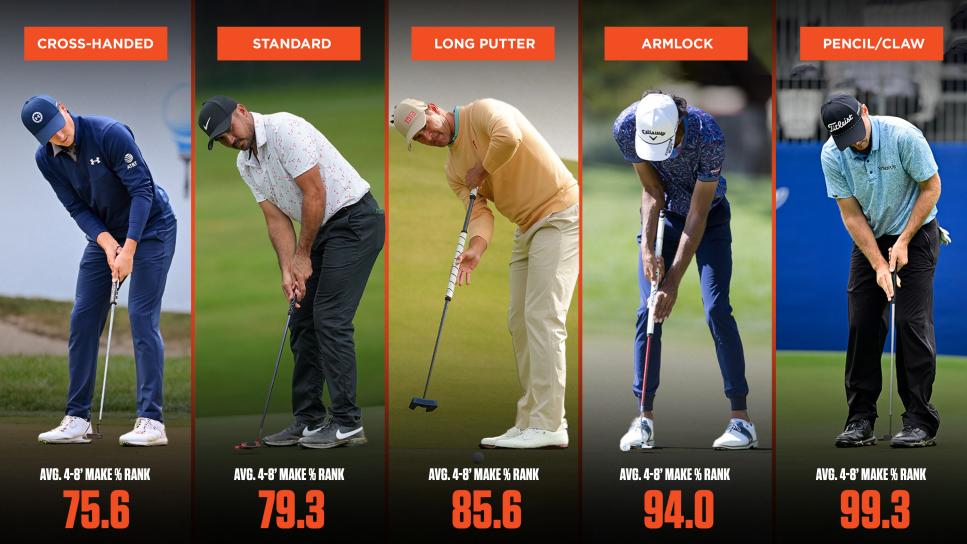
Cross-handed players also rank best on average in make percentage from four to eight feet. This makes sense considering that players often switch to this method for increased stability from short range. Left-hand-low helps to take the right hand out of the stroke, eliminating the over-active right hand that can cause short misses with a standard grip.
Players also turn to the armlock method for better stability on short putts, which is why on the surface it’s surprising that they rank lower here. Yet, this data is very limited considering just Bhatia and Kuchar used the method for most of this year. Kuchar ranked 12th in the stat (through the Tour Championship) and Bhatia struggled, ranking 176, making it very difficult to draw any conclusions.
MORE: Rules of Golf Review—What do I do if my ball just hit another ball on the green?
Though cross-handed is one option to fix a shaky right hand, perhaps the most popular fix is to use a claw or pencil grip which takes much of the right hand off the grip of the club. Those players, however, average the worst rank in putting from four to eight feet, with only one player—Taylor Pendrith—in the top 20. This suggests that though this style of grip may help some with short putts, it’s not a catch-all fix.
Three-putt avoidance
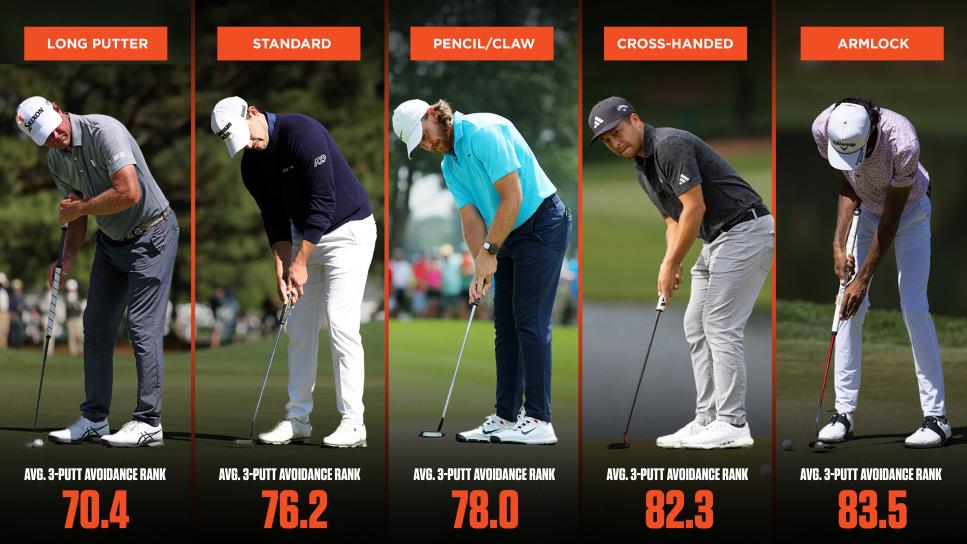
It is somewhat surprising to see that the five players who use a long putter average the highest rank in three-putt avoidance given that the technique can be tough to control distance with. A theory is that some of those who use a long putter, like Adam Scott and Lucas Glover, are among the best ball-strikers on tour, so they are leaving themselves closer to hole on their approaches, making three-putts less likely.
The cross-handed contingent doesn’t fare as strong in three-putt avoidance, ranking fourth out of the five techniques. While cross-handed may be the best technique from short range, players who use it are not as effective from longer range. Just one player—Sam Ryder—was inside the top 10 in the stat among the 24 players we counted. This could be because the right hand—considered by many ( including Tiger Woods ) to be most responsible for feel—is taken out of the stroke with a cross-handed grip.
You’ll notice that in all three stats we looked at, the standard grip had the second-highest average rank. Compared to the other techniques, the standard grip is consistently strong from short and longer range, which is not surprising: If those players were struggling, they’d likely consider an alternative method.
More from Golf Digest
Trending now.
Get Started
Get a grip—the right grip for you.

Grip type #1: The weak grip
Grip type #2: the modern grip, grip type #3: the strong grip.
- CONNECTING THE HANDS With respect to connecting the hands it is important to use whichever method gives you the best feel for keeping your hands together during the swing. Listed below are the most common methods of connecting the hands. Be sure to experiment with all three to get a better sense of what works best for you. Connecting the hands typically involves one of the three methods shown above. Over the years, the overlap method has been the most popular, although the interlock has been used by a number of players including Jack Nicklaus and Tiger Woods who prefer intertwining their hands on the club. The 10-finger method is yet another way to connect the hands on the club for players with smaller hands that have difficulty using the overlap and interlock method. All three methods work well, and it is important to choose the method that allows you to maintain a consistent connection between the hands for the duration of the swing. Now that you have a better understanding of the grip types I will now discuss the proper positioning for the left and right hand on the modern grip.
- POSITION THE LEFT HAND Proper positioning of the left hand is as easy as following the pictures shown above. For starters, take notice of how the club appears secured against the base of the fingers in the first photo. To achieve this, be sure the club runs from the base of your pinky and through the middle of the index finger. Next, notice the thumb and the position of the knuckles in the second photo. This is how the modern grip appears in the left hand. The modern grip typically forms a V between the thumb and index finger that points to the right of center. If you copy these positions, you will have the ability to hinge your wrist both vertically and horizontally as shown in the third and fourth photo. As you go through these position checks, you will feel the fingers doing most of the work, and the palm applying a bit of downward pressure on the finger tips. It's a good idea to also try this with your left hand in a stronger position (more right of center) and also a weaker position (centered or even left of center) to feel the differences.
- POSITIONING THE RIGHT HAND Proper positioning of the right hand starts with placing it against the side of the left thumb as shown in the first photo. From here, it's important to position the club diagonally across the middle of the index finger, and against the base of the middle two fingers as shown in the second photo. Notice how snug the middle two fingers appear, and the how the left thumb fits against the right palm with the index finger slightly triggered. As you complete the grip, the right thumb fits on the club slightly left of center and a V is formed between the thumb and index finger. From here, the hands have the best chance to work together as a team, and produce the necessary wrist action and power transfer during the swing.
PGA of America
The PGA of America is one of the world's largest sports organizations, composed of PGA of America Golf Professionals who work daily to grow interest and participation in the game of golf.
Signature Moves of 70 PGA
- Club Fitting
- Personal Lesson
- Ball Fitting
- GOLF TIPS How To Play: Beginner Tips Golf Drills & Swing Tips Golf Swing Tips Golf Shots & Swing Setups Golf Exercises & Stretches Mental Golf Golf Magazine Online Golf Workouts: Your Health Bunker Golf Tips Golf Alignment Sticks
- GROUPS Pro Golfers Signature Shots Pro Golfers Swing Sequence Better Golf Watching the Pros PGA Tour Players Signature Move Golf's Greatest Teachers Ladies Golf Tips Left Handed Golf Tips Senior Golf Tips & Lessons PGA Players On Course Golf Video Lessons
- EQUIPMENT Drivers Tips Fairway Woods Tips Hybrid Tips Irons Tips Wedges Tips Putting Tips Comparison Charts Best Golf Hybrids Chart Best Golf Irons Chart Best Golf Putters Chart Best Golf Shoes Chart Best Golf Bags Chart Golf Balls Golf Ball Custom Fitting Golf Ball Reviews Golf Ball Compression Chart Golf Ball Comparision Chart Golf Ball Layers Chart Golf Ball Dimples Golf Ball Spin Chart Golf Ball Cover Chart Golf Ball Core Chart Golf Ball Price Chart Top Rated Golf Balls Reviews Golf Iron Reviews Golf Hybrid Reviews Golf Club Reviews, and Test Golf Ball Reviews Golf Glove Reviews Golf Bag Reviews Golf Push Cart Reviews Golf Putter Reviews Golf Shoe Reviews Golf GPS Reviews Golf Shaft Reviews Golf Club Sets Reviews Golf Course Reviews Golf Equipment News Golf Equipment Choices Golf Training Aids Thomas Golf Reviews
- GUIDES Golf Grip Golf Club Fitting Golf Practice Golf Techniques Golf Questions Answered Golf Quiz United States Golf Courses Canada Golf Courses United Kingdom Golf Courses Golf Course Reviews Golf Course Map Unlimited Free Golf Tips & Lessons
- INFO Home Golf Terms Golf Shop Golf in the USA Golf Videos Golf Rules Golf Tours List Golf Jokes Golf News All For Golf History of Golf Handicap Calculator Key Principles of Golf
- SEARCH ARTICLES
- SHOT TYPE Driving Woods Hybrids Irons Bunkers Chipping Putting
- GAME IMPROVEMENT Shot Setup The Golf Swing Practice & Drills Playing Conditions Mental Game Alignment Sticks Questions Answered
- GROUPS Greatest Teachers Pro Golfers Beginners Seniors Ladies Left Handed
- INFO Golf in the USA Personalized Lesson Ball Fitting Club Fitting
- SEARCH VIDEOS
Paul Azinger Pro Golfer: Ultra-Strong Grip – Golf Tip
From his playing days to his current role as a TV golf analyst, Paul Azinger has always done things with a certain flare. One look at his grip will tell you that.
The lanky Floridian won 12 PGA Tour events, including the 1993 PGA Championship. Azinger was known for his extremely low ball flight and lights-out putting, as well as a bulldog's tenacity under pressure. Azinger never shied away from a challenge, even when facing the likes of Seve Ballesteros in the Ryder Cup.
A bout with cancer interrupted Azinger's best years, but he defeated the disease and won for the final time in 2000.
Unconventional move: An extremely “strong” grip position, with the hands turned well to the right of “neutral”
Who else does it: Fred Couples , Zach Johnson , David Duval
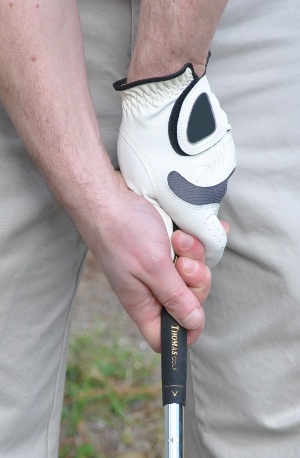
Photo 1: The left hand is rotated so far to the golfer's right that the thumb runs down the side of the club's handle. The right hand is much more “underneath” the grip than standard. Also, the back of Azinger's left forearm and the inside of his right forearm face outward, toward the ball.
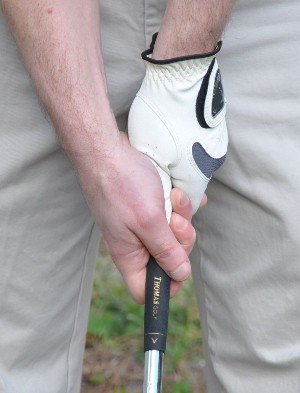
Photo 2: This is the conventional “neutral” grip that is considered ideal, with the left thumb running down the center of the handle and joined with the base of the right thumb pad.
Why it's a problem for amateurs: While a slightly strong grip can promote a free release of the club through impact, Azinger's style would be too much of a good thing for most golfers. Because the hands and forearms are pre-set in a rotated position, there's very little room left to turn them on the backswing. This causes a closed clubface at the top, resulting in major hooks and pulled shots.
How Azinger gets away with it: Indeed, Azinger's clubface is very shut at the top. He compensates by rotating the hips far to the left on the downswing, with his arms trailing more than the typical amount. By “dragging” the club, Azinger was able to hold the clubface open through impact, a move called a “delayed release.” If his hips and arms followed the normal sequence and spacing, Azinger would hit massive hooks.
The cure: If you hook the ball due to a strong grip, roll the hands to your left (for a right-hander) about 1/8 inch. Practice and play this way until you become comfortable and your shots fly straighter. If you continue producing too much right-to-left action, go another 1/8 inch and repeat the process.
It can take a while to adjust to even a slight grip change, so stick with it.
Player Profile
Playing Golf with a Strong – or Ultra-Strong – Grip
The way you grip the club says a lot about the golf swing that you are going to make. Your grip and your swing technique will be forever linked, and you need to make sure that they complement each other nicely if you are going to find success on the course. Using a grip and a swing style that are not well-suited to each other is only going to make the game harder than it already is. There are a variety of different grips that you can use to play good golf, but make sure that the grip you choose is one that will cooperate with the rest of your swing.
One of the most-extreme grip options that you can use is a strong left hand position. When you play the game using a strong grip –or even an ultra-strong grip – you will be giving your hands a large measure of control over the club head. A strong left hand grip is one that is turned dramatically to the right as you are looking down from address. If you can see most of the back of your left hand when you look down at your grip, you are in a strong position. If you can see all four knuckles on the back of your left hand, you are in an ultra-strong grip position. Either way, your hands will have plenty of power over the movement over the club head during the swing when you take this approach. This is in contrast to a weak grip style, where the left hand is turned to the left on the grip. When using a weak grip, you will only be able to see one or two knuckles at address, and your hands will have little control over how the club moves during the swing. When you use a weak grip, you will be forced to manage the movement of the club mostly with your arms and shoulders, since your hands won't be able to manipulate the club head through the hitting area.
So, is a strong or ultra-strong grip right for you? Well, it depends. If you look to the players on the PGA Tour, you can see that there are a variety of grip styles represented. One great example of using an ultra-strong grip to great success is the career of Paul Azinger. Azinger used a very strong left hand grip in his game, and it worked to great effect. The key that allowed Azinger to have success with the strong left hand grip was that the rest of his swing matched the style of grip that he was using. Where another player might not be able to make that style of grip work with their other swing mechanics, it was a perfect fit for Azinger. You will need to take a close look at your own swing before deciding if a strong left hand grip is something that could make you a better player.
All of the instruction contained below is based on a right handed golfer. If you happen to play left handed, please reverse the directions as necessary.
The Benefits of a Strong Grip Position
Before you get to the point of making a decision about your own grip , it will be helpful to learn a little more about the pros and cons of playing from a strong left hand position. As with anything in golf, there are positives that can be gained by making this change – but there are some drawbacks as well. No golf method or technique is perfect, so you will also need to pick and choose from various options until you find the ones that suit you best.
Following are three benefits that you could enjoy if you decide to use a strong left hand grip in your golf swing.
- Stability through the hitting area. Many of the players who use a strong grip do so because of the feeling that it offers through impact. When you strike the ball solidly while using a strong grip, the feeling is one of strength and power. Of course, you will still need to do the hard work of delivering the sweet spot of the club onto the back of the ball, but it will feel great once you do. You might also notice that your off-center hits result in slightly better shots when using a strong grip because the club face doesn't rotate quite as much on impact.
- Improved body rotation. This is something that results from the kind of swing you will have to make in order to use a strong grip. When you change over to a strong left hand grip, you will quickly realize that you need to make a great shoulder turn in order to put your swing together successfully. Without good rotational motion from the rest of your body, your strong grip will likely just result in a quick hook. Think of this point as being forced to do something that you should be doing anyway – a full shoulder turn is good for your swing, and a strong grip will require you to make a good turn if you wish to hit a solid shot.
- Strength through the long grass. When your ball finds its way into some longer grass around the edges of the golf course, getting back in play should be your first priority. Using a strong grip, you will notice that you have an improved ability to cut the club through the grass and reach the ball with enough power to get it back into play. Players with a weak grip often struggle to hit good shots from the rough, so using a strong grip can be a big advantage when you stray from the fairway.
There are likely even more advantages to a strong grip that you may experience, but these three are a great start. Even if only one or two of these elements actually shows up in your own game, you might still find the switch to be worth your time and effort.
Drawbacks to a Strong Grip
As mentioned above, no technique in golf is perfect. There are plenty of positives to be had when playing golf with a strong grip, but there are some drawbacks as well. Only when the pros sufficiently outweigh the cons for your own playing style should you decide to go ahead with a grip change. Below are three potential drawbacks to using a strong grip –
- One dimensional game. Many golfers who use a strong grip are only able to create one ball flight – usually a draw. If you are a player who likes to work the ball both ways depending on the hole in front of you, playing with an extremely strong grip might not be a good fit. It is challenging to adjust your ball flight with a strong grip simply because of the position that your body has to be in to strike the ball solidly. It is not impossible to vary your ball flights with a strong grip, but most players will have an easier time varying their shots when playing with a weak grip instead.
- Distance control issues. Another problem that you may run into is the inability to control the distance of your shorter shots. Many players report having more 'feel' with a weaker grip, and you might notice that this lack of feel translates into not hitting your wedges the right distance. This shouldn't be a problem on full swings, but it could be an issue when trying to hit soft shots anywhere from 40 – 90 yards. This won't be an issue for every golfer that tries a strong grip, but it is something to think about before making a switch.
- The danger of a quick hook. Playing with a strong grip will always make it a possibility that you could hit a quick hook – especially off the tee. If your body doesn't rotate properly during a given swing, the club face will have the ability to close quickly and send the ball spinning hard to the left. While proper swing technique will keep you safely away from the hook, you may not like the feeling of having to worry about that snap hook making an appearance at the worst possible time. Generally speaking, players who use a weaker grip will have less-dramatic misses in one direction or another.
None of these potential drawbacks should prevent you from trying out a strong grip in your own game. However, they are important points to be aware of and to watch out for on the course. If you notice that these problems persist in your game after changing to a strong grip, you may have to switch back – or at least find a happy medium where you are able to enjoy some of the benefits of a strong grip without having to deal with the negatives.
Making the Change
Presuming that you have decided to try a strong grip in your own game, you will need a clear plan in order to make the change successfully. If you were to simply try to walk onto the first tee and play a round with your new grip, the results would be ugly to say the least. Your grip has a ripple effect on everything else that you do in your swing, so this is not a change that should be entered into lightly. When changing your grip, expect to spend at least a month or two working on your swing on the driving range before you start to see positive results on the course. That isn't meant to be discouraging, but it is simply the reality of making this kind of change to your game. To get started on your grip change, you should first stay away from the golf course – including the driving range. That might sound crazy, but the best way to change your grip is to avoid hitting any shots at all for a short period of time. During this time, you will simply work on learning how to place your hands into the right position for your new grip. Only when your new grip becomes comfortable should you move on to actually hitting some shots.
Follow the steps below to learn how to take a strong grip –
- Holding any one of your golf clubs, take the regular grip that you have been using in your game up to this point. Stand in an address position and pretend as if you were getting ready to hit a shot.
- Next, drop your right hand off of the club so that you are only holding on with your left hand grip. You should still be in your address position.
- Now turn your left hand to the right gradually to make your grip stronger. As you are moving your grip, keep looking down at your left hand to monitor how far it has turned. You may need to use your right hand to balance the club while turning your left into position.
- Continue to turn your left hand until you can see at least three knuckles on the back of your left hand. If you would like, you can keep going all the way until you see all four knuckles.
- When you are happy with the position of your left hand, add your right hand back onto the grip. It should be positioned so that it 'matches' comfortably with your left hand and forms a tight grip around the club.
Once you feel like you can take this new grip over and over again comfortably, you can start to make some practice swings and see how it feels when you put the club in motion. It is still a good idea to make these practice swings somewhere away from the golf course where you won't actually be hitting any balls – just make rehearsal swings to get used to the feeling of the club in your hands with the modified grip. After a period of time where you only work on your new grip away from the course, it will be okay to head to the driving range and start hitting a few shots. It is important at this point that you keep your expectations in check when it comes to the quality of shots that you will hit. Changing your grip is a big deal in terms of the golf swing, and the first shots that you hit might not be very pretty. Don't get down on yourself after a few bad shots – stick with it and allow yourself time to learn how to strike quality shots while using a strong grip.
One of the key things to remember early on is that you need to make a big shoulder turn to hit good shots with your new grip. If you cut your shoulder turn short in the backswing, you won't have enough time to get the club into the right position. The result will be a swing that requires you to slap at the ball with your hands – and a hook is almost sure to result. If you find that your first few shots on the range are big hooks, try making a bigger turn with your shoulders. Maintain a good tempo and rhythm as you rotate away from the ball, and only stop turning when you are no longer able to turn right and maintain your balance. It will take a little bit of time until you find the perfect spot where you have gone far enough – but not too far – with your backswing. Any time you lose your balance, you will know that you have gone too far.
Another problem that you might run into on the driving range is hitting the ball fat with some of your irons. This issue is typically caused by releasing the club prematurely in the downswing. Since you have so much more control over the club head in your hands with a strong grip , you may begin to release the club before you should on the way down toward the ball. To alleviate this problem, focus on using the back of your left hand to pull the club down toward impact. Don't worry about releasing the club – that will happen naturally as you rotate through the shot. As long as you turn as quickly as you can toward the target during the downswing, the club is sure to release nicely through the ball. By getting your right hand to remain passive in the downswing you should be able to correct the problem of hitting the ball fat.
After you spend some time on the range hitting shot after shot with your new grip, you should begin to find some success. More and more of your shots will look good in the air, and they will start to feel better coming off the club. This is a great sign, and you should be excited about the progress that you have made. Don't, however, get too far ahead of yourself. There is a big difference between hitting some good shots on the range and playing well on the course – and you still have plenty of hard work in front of you.
Going Back onto the Course
If you have done a good job of staying off of the course while working on your grip change, you are probably anxious to get back out with your friends and play a round of golf. When the time comes to play your first round, there are bound to be expectations based on the progress that you have made on the driving range. It is fine to be excited about your new grip and new swing, but don't count on shooting a new personal best score in your first round back. For most players, it is going to take some time before the work on the range translates to the scorecard.
To help you make this transition as quickly as possible, try using the three tips below –
- Don't play for anything. If you are a golfer who often plays in competitions at your local club, avoid planning your first round back for a tournament day. You don't want to add the pressure of a competition to the hard work you already have to do in terms of using your new grip on the course. You want to return to a casual round of golf where you can focus on hitting as many good shots as possible without too much concern for your score.
- Play an easy course. Try to schedule your first round or two on one of the easier golf courses in your area. Playing a tough course could quickly lead to frustration when you hit a few poor shots and maybe lose a couple golf balls. Give yourself a soft landing by picking out a golf course with wide fairways and big greens. You can always head back to the tougher courses once you are more-familiar with your new grip and the shots that it is capable of creating.
- Expect more draw. Most likely, the ball is going to start moving right to left in the air more than ever before. Even if you are a player who usually fades the ball, you may find that your standard ball flight is now a draw. You should have some idea of what ball flight to expect from the work you have done on the driving range, but you won't really know what it looks like until you are actually playing on the course.
Not every golfer is cut out to play with an extremely strong left hand grip like Paul Azinger. Just because the grip worked well for him does not necessarily mean it will be the right choice for you. However, if you would like to try out a strong or ultra- strong grip in your own game, use the tips and instruction above to guide your practice sessions. As long as you put in plenty of hard work on the driving range while making the change, you should be able to start hitting quality shots on the golf course in the near future.

Share This Page
Your information has been received.
(We respect privacy and keep all emails confidential)
You have reached the maximum number of submissions for today.
Equipment Spotlight: Premium brand Thomas Golf - Custom golf clubs with Shot Accuracy Technology
Drivers | Woods | Hybrids | Irons + Wedges | Putters | Chippers | Accessories | Clearance
New Golf Lessons Delivered Each Week
- Please enter a valid email address.
New Product: Hybrid Mini Driver

AT705 Driver 10.5° Right Hand
AT705 Driver 10.5° Left Hand
AT725 Driver 10.5° Right Hand

Pete Styles PGA Pro Instructor
I Will Improve Your Game!
10,000+ videos by PGA Pros
Improve Your Game Fast!

Hybrid Golf Clubs
#1,2,3,4,5,6,7,8,9,PW,GW,SW,LW Right Handed / Left Handed
Only $129 each Includes Free Pro-Fitting Service

AT705 Hybrid Mens
AT705 Hybrid Ladies
AT725 Hybrid Mens
AT725 Hybrid Ladies
My Account | Sitemap | Support This Site | Suggest A Tip
Golf Info Guide copyright 1998-2024, Privacy Policy
Subscribe to our newsletter for golf improvement tips and great deals! Sign up today!

3 Most Popular Grips on The PGA Tour (2023 Update)
A golf grip helps you maintain control over your club during and prior to the swing motion. By changing grips, you can offset your clicking difficulty and cure your swing. But to ensure your grip serves you instead of burdening you to change your swing, you need to use one manufactured for high-level performance.
Looking at the PGA Tour bags can help you find the brand worth investing in. So, what are the most popular grips on the PGA Tour?
The most popular grips on the PGA Tour are Golf Pride Tour Velvet, Golf Pride MCC, and various iterations of SuperStroke Pistol GT. The top golf grip brands are Golf Pride, SuperStroke, and Lamkin.
In this article, you will learn more about the top three brands, the players who use the grips from each one, and the most used grips made by each company. Towards the end is a short buying guide that can help you decide which grip is best for you.
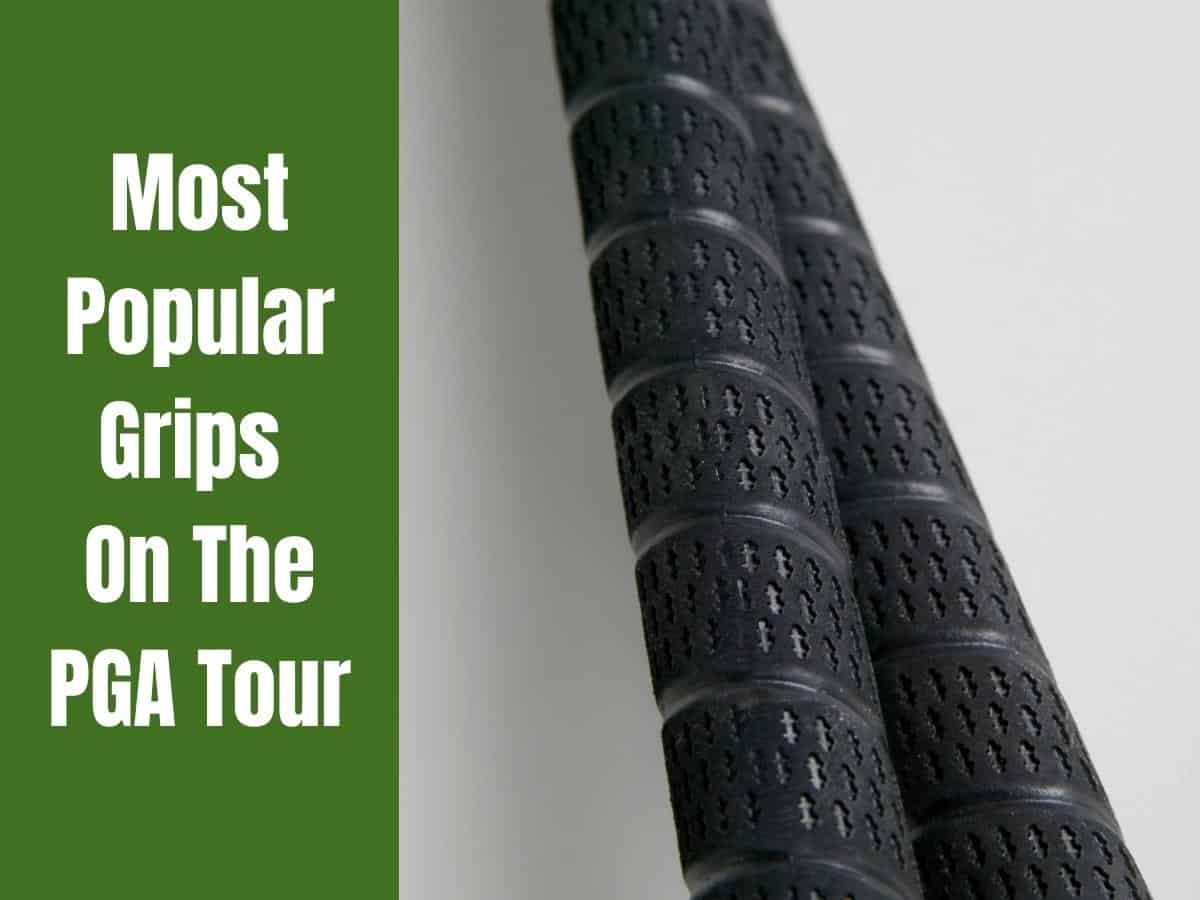
Popular Golf Grip Brands on the PGA Tour
Going for the most-adopted golf grip is not going to improve your game. PGA bags are good indicators of manufacturer integrity and overall brand quality. But beyond that, you must focus on your own needs. This section puts forth three brands that you can buy grips from. The grips made by the following companies are used by Tour players.
The most popular grips on the PGA Tour are:
- Golf Pride Tour Velvet – 28 grips used on Tour.
- Golf Pride MCC – 11 grips used on Tour
- SuperStroke Pistol GT – 7 grips (different iterations) used on Tour.
Let’s look at these in more detail.
1. Golf Pride
Golf Pride has been in the golf grip business since the 1940s and was founded by Thomas L. Fawick, the inventor of the pneumatic clutch and brake. Aside from its incredible founding story, Golf Pride is popular because it accommodates the broadest set of needs among golfers and dominates the iron grip market.
Ever since the 1940s, this company has been innovating, which has earned it the special status it enjoys today. Some of its firsts include rubber grips and slip-on grips, neither of which were common when Golf Pride decided to take a risk. Today, when Pride grips take a risk, people pay attention.
Today, Golf Pride’s marketing revolves around it being the #1 grip on Tour. The company isn’t investing so much in its campaign and standing by a tagline that another grip manufacturer can steal. Pride prides itself in being the #1 grip on Tour. Then there must be something to its popularity on Tour aside from sponsorship money.
Provided the grip maker is owned by the Eaton corporation and has a significant sponsorship budget, it seems confident that even if a competitor tried to come for its #1 on Tour title by soliciting a broader range of Tour golfers, they would turn them down because of Golf Pride’s superiority.

The steep difference between Golf Pride and its competitors does reflect this as well. Golf Pride golf grips are used by 69 players on the PGA Tour. This is almost 3 times as high as the second-place grip brand’s adoption.
Among the pros using Golf Pride golf grips are Tiger Woods, Scottie Scheffler, Rory McIlroy, Patrick Cantlay, Tommy Fleetwood, and Xander Schaufelle. This is one of the most highly-ranked rosters of any golf brand’s adoption across any category.
The top 5 players in the world today, alongside an all-time great, use Golf Pride golf grips. Generally, brands that sponsor their way into Tour bags often play for breadth (get a large number of low-purse players) or concentrated rank (get a few high-ranking players).
Golf Pride being adopted by the highest ranked players and the largest number of pros on Tour speaks for its quality and versatility.
What this means for you is that if you like Rory McIlroy but are a high-handicap player with different needs, you can both use different grips from the same brand. That said, knowing which grips are used by Tour players is very important.
What Golf Pride Grips Do The Pros Use?
The following Golf Pride grips are found in Tour players’ bags:
2. SuperStroke
While SuperStorke grips are not as widely adopted as Golf Pride, they have a unique set of patents that make some of their grip models unlike most grips on the market.
SuperStroke has been in the golf grip business since the 1990s, slightly late compared to Golf Pride but still with a significant history, research, and development.
SuperStroke dominates the putter grip market and is still the only big grip manufacturer that offers a wide range of grip sizes. Many starting golfers can improve their score-to-hole efficiency by stepping up their grip size.
However, SuperStroke’s high adoption among hobbyists has slightly stigmatized the brand in the eyes of pro-purists. Pro golf players don’t seem as eager to tout bigger SuperStroke grip on Tour.
Still, 24 players use one SuperStroke grip each. Again, this reflects on the versatility of the Golf Pride grips since multiple players use two or more grips. In contrast, SuperStroke grips are used more sparsely. The ones who use a SuperStroke grip use only one.
“That means the specific grip is more important than the brand.” Golf Educate
In other words, if you don’t find a SuperStroke grip that serves your specific needs, don’t get the next best grip from the brand. If SuperStroke has anything to offer, it is the grip-player compatibility.
Rory McIlroy, Justin Thomas, and Xander Schauffele are among the pros using SuperStroke grips on Tour. While the SuperStroke adoption roster isn’t as ranking-packed as Golf Pride, it does overlap a little with the #1 grip on Tour.
This shows that even if SuperStroke isn’t as heavily invested in bag placements, it has the quality that some of the top-ranking Tour players can rely on.
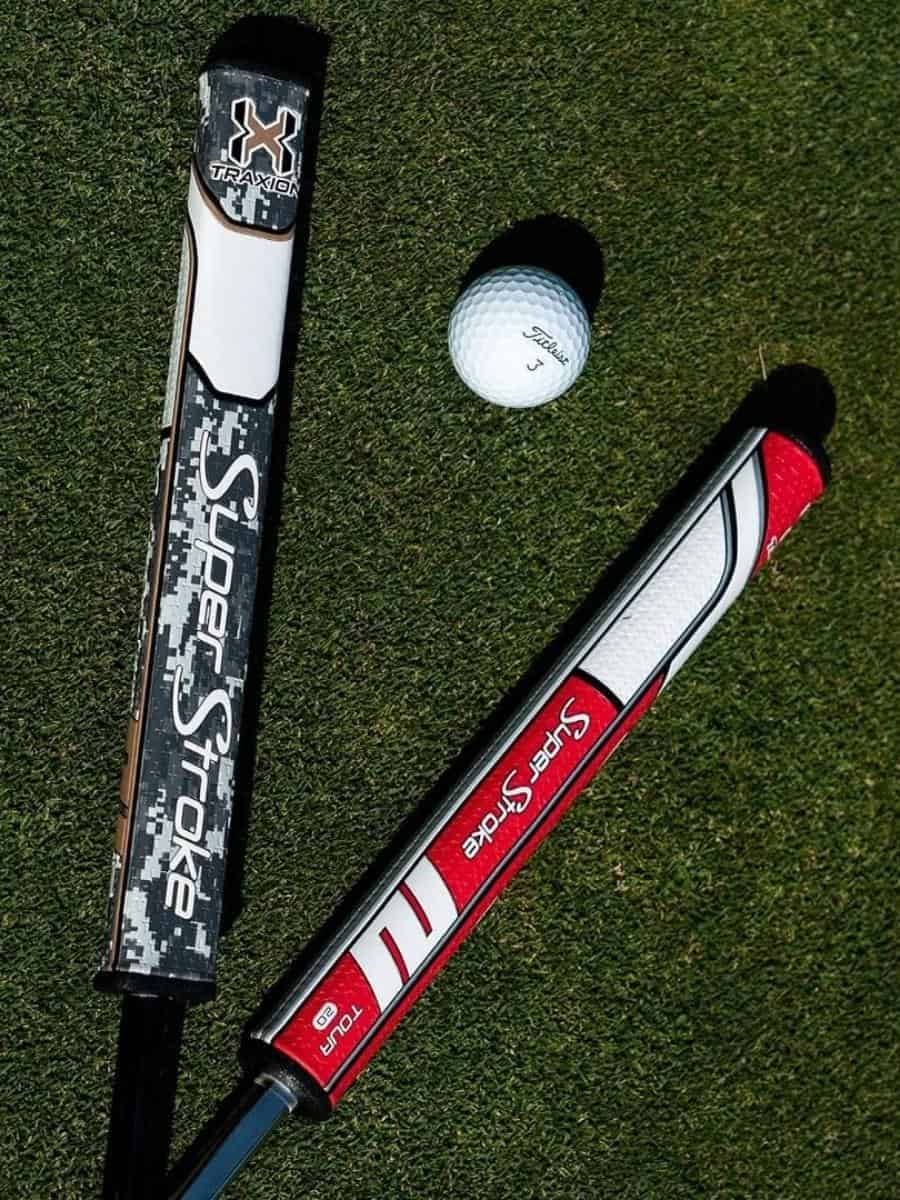
Which SuperStroke Grips Do PGA Tour Players Use?
The superstore grips most adopted on the PGA Tour are:
Even the SuperStroke models that are adopted have further iteration preference, which reemphasizes that SuperStroke doesn’t have grips that are universally better-performing, but it has specific grips that can help you perform better.
But again, it all relies on finding the grip that matches your needs, and it is possible that SuperStroke might not have what you need.
Lamkin is one of the oldest grip manufacturers, with a history dating back to the 1920s. Its rubber grips are made in China, and almost any feature offered by its competitors is seemingly offered by Lamkin.
Rubber grips? Lamkin has got them. Plus-size grips? Lamkin has them too. However, Lamkin, despite trying to be everything for everyone, isn’t as widely adopted on the Tour.
Lamkin has 8 times lower adoption numbers than the #1 grip on Tour. However, the names that have adopted it are worth paying attention to.
Earlier, I mentioned how some brands don’t spread out their bag placements across a large number of players but focus on getting their products in the bags attached to the highest-value purses.
Lamkin seems to be using this strategy because some of the names on the Tour use at least one Lamkin grip. Household names like Brendan Steele, Justin Rose, and Matt Kuchar use Lamkin grips.
Which Lamkin Grips Do The Pros Use?
The Lamkin grip models currently used on Tour are:
Sidenote: Do you want to know what irons the pros use? Check out this article, What Irons Do PGA Players Use ?

Golf Grip Buying Guide
Now that you know which individual grips are popular and the brands that make their way into Tour players’ bags, it is time to go over the essentials of getting a golf grip that you can be happy with.
- Use brand as an indicator of quality – Because golf is a high value-market, there is plenty of cheap stuff marked up to be sold to willing buyers. Brands with PGA Tour visibility are more reliable.
- Know your base spin rate – You should know whether you want the ball to spin more or less with a specific club.
- Pick the grip size that works for the specific club – The bigger the grip, the higher the spin rate. If a particular club drives well, but the ball slants too much, you might need an undersized grip.
- Know your base pressure – Do you grip the club too harshly? Do you apply very little pressure? Knowing this can help you get the right material.
- Pick grip material that serves you – Soft grip material is more comfortable, while firm grips will do the job with light pressure.
- Get fitted for a grip if you need to – If you’ve assessed everything and are still not confident about your grip choice, feel free to get fitted for a grip.
Let’s Wrap This Up!
Golf Pride leads the race by some margin for the most popular grips on the PGA Tour , with some of the biggest names in the game using their grips with great success. Now that you know which players use which brand, be sure to keep an eye out for them on TV.
It will be interesting to see if and how these numbers change over the coming years as manufacturers jostle to increase the popularity rankings, but for now, the top three are well ahead of the chasing pack.
Related Posts You May Like:
- Top Brands on The PGA Tour (Irons, Putters, Balls & More!)
- 5 Most Popular Golf Balls on The PGA Tour
- Are Golf Hitting Nets Worth It ?
- 5 Most Popular Wedges on The PGA Tour
Similar Posts

5 Best Golf Brands For Women (2023 Update)
It is easy to overlook the importance of fabulous clothes for women in golf. With new brands making an appearance every day, it can be daunting trying to figure out which brands offer both quality and style at affordable prices. So what are the best golf brands for women? The best golf brands for women…

3 Top Reasons Why Golf Carts Are So Expensive
Golf is a game played by rich people. Rich people don’t mind paying for luxury, comfort, and style. That is the way of the world, but you have to wonder why golf carts are so expensive? Is it because enough wealthy people keep on buying them? Let’s examine the reasons that make golf carts so…

Can Golf Shoes Be Used For Walking?
Golf shoes do a lot of walking – on the golf course and from the clubhouse to the tee and from the last green to the changing rooms. If you have spikeless shoes, you could certainly wear them out, but they may not be the best choice for walking outside of the course. Golf shoes…
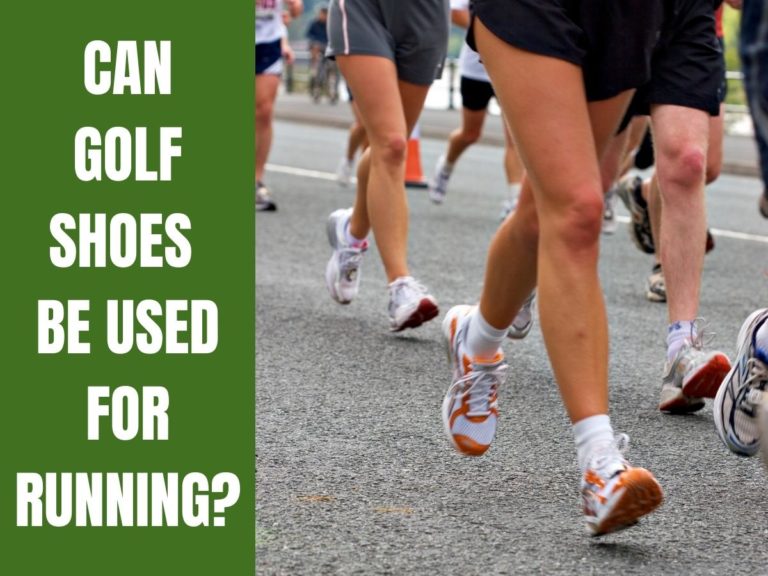
Can Golf Shoes Be Used For Running?
In the modern age, we are most fortunate to have footwear specially designed for the sports we play. For golf, we have shoes that provide traction during the swing, and for running, we have shoes that support the feet, legs, and body. Golf shoes are not suited for running, nor are they recommended, as the…
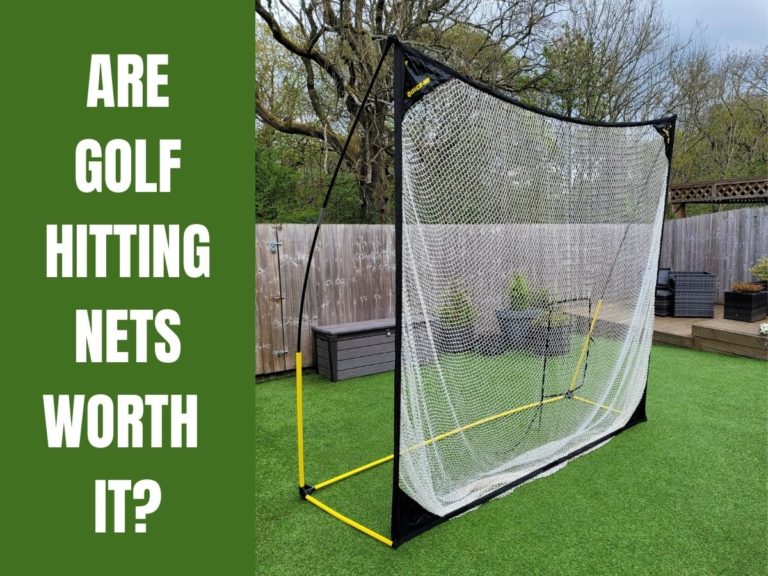
Are Golf Hitting Nets Worth It?
The Covid-19 pandemic saw many golfers look for opportunities to increase their practice time during the lockdowns, and the golf hitting net was one item they used to achieve this. Golf is one of the most expensive sports globally as equipment such as clubs, balls, club fees, clothing, shoes, etc., all quickly add up. So,…
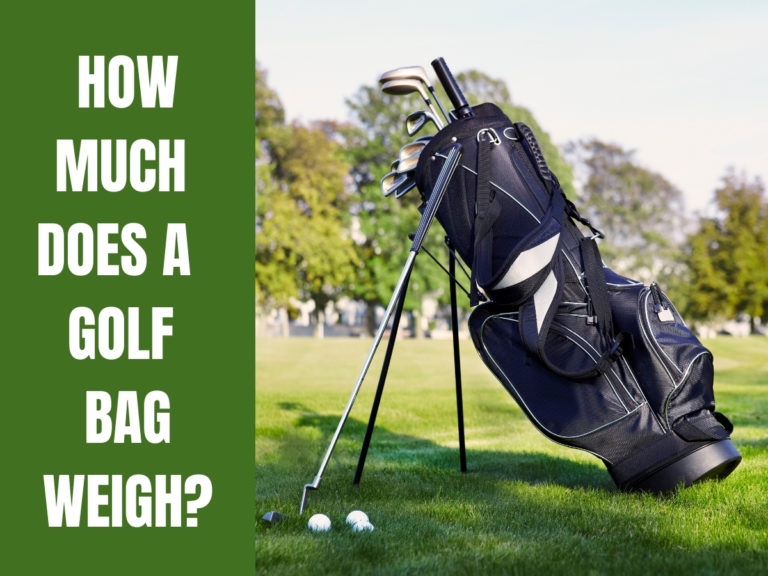
How Much Does A Golf Bag Weigh? (And How To Reduce Weight)
You’ll know how heavy your golf bag can get if you’re just starting your golfing journey. The weight soon adds up when you include all the gear you need, from clubs, balls, accessories, drinks, etc. So, how much does a golf bag weigh? A golf bag unloaded can weigh between 3lbs and 11lbs, depending on…
Is Your Game Suffering?
Join our free newsletter and receive game improvement tips, drills, product discounts, etc…, join over 10,000 golfers today.
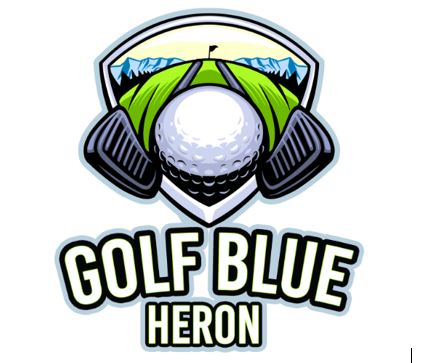
Pros And Cons Of A Strong Golf Grip – Who Should Use It

There are three types of grip setups commonly employed by professional and amateur golfers. Strong, neutral, and weak.
The way you grip the club will promote varying clubhead positions at impact, which induces a fade, draw, or a straight shot.
If you need insight into different grips, you can read our article, Strong vs Weak Golf Grips . However, for the purposes of this article, we are out to identify the pros and cons of a strong golf grip to determine who should use it.
My Experience With Golf Grip Strength
In my 27 years of playing golf, I have used a neutral grip for all but three months.
I had a coach that got me to weaken it, but that was disastrous and resulted in a consistent hook.
By strengthening my grip, I can get more power at impact and increased distance.
How Important Is The Strength Of Your Golf Grip?
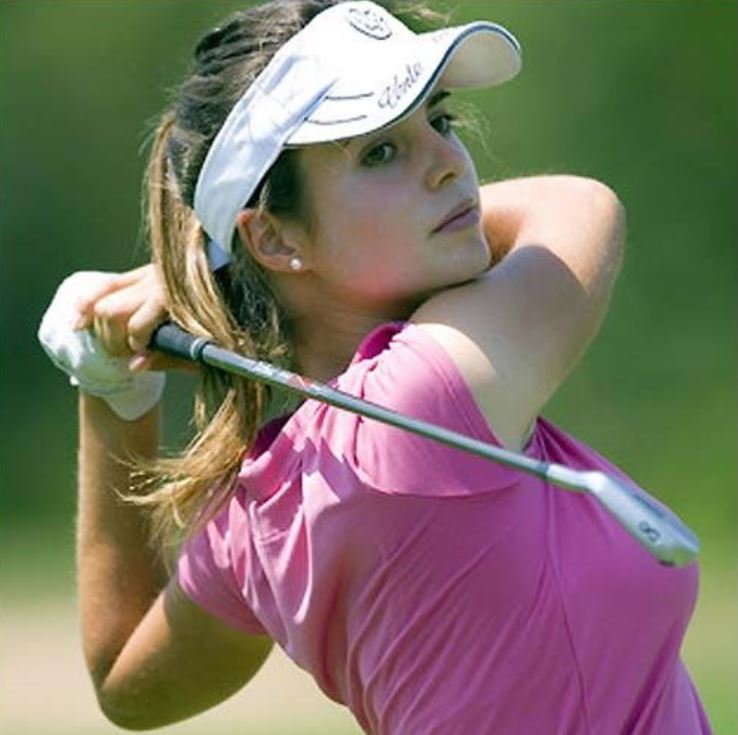
While a strong grip is likely to deliver more power at impact and more distance, it may be uncomfortable for some players to apply. Ultimately, if you are not comfortable with a grip don’t use it.
According to Golf.com’s Nathalie Filler, a stronger golf grip prompts an in-to-out swing leading to a closed clubface at impact and a draw shape. However, if your tempo is off, it can lead to a duck hook.
What Is A Strong Golf Grip?
Tom Watson says that a strong grip will reveal too many knuckles at setup and causes your clubface to close at impact.
Additionally, Filler explains that a strong grip is made when the thumb of your leading hand points to the right of the clubface for right-handers and left for lefties.
The great Jack Nicklaus suggests that players with a naturally weak grip should use an interlocking setup to gain a stronger grip on the club.
Pros Of A Strong Golf Grip

Reduces Sliced Shots
As mentioned earlier, a stronger grip promotes an in-to-out swing which leads to your clubface closing at impact.
This action prompts a draw shape and is helpful to players who swing over the top and are serial slicers of the ball.
Those of you with a stronger grip will find it easier to induce a draw than players with a weaker grip, who tend to open their face and fade the ball more.
The downside to this setup is that if your swing rhythm is off, it can cause you to hook your shots.
Optimized Power
According to Golf Week’s Mike Southern, a stronger grip makes the club feel lighter and easier to handle on your backswing.
That helps you to optimize your clubhead speed and transfer it to your ball speed. Resulting in a powerful launch and maximum distance.
From my own experience, a stronger grip helped me achieve a consistently powerful launch, maximizing distance. When I used a weaker grip, I lost considerable distance and never felt in control of the club at impact.
Comfortable
As an average golfer, you will likely find that a stronger grip is more comfortable compared to weaker variants.
It is natural for us to find comfort in gripping an item tightly, to ensure we have control over it.
Late golf coach Harvey Penick believed that all average golfers should use a strong grip.
His reasoning was that it optimized their swing mechanics and ball-striking abilities.
Promotes A Draw
I have explained that a strong grip promotes an in-to-out swing which prompts the clubface to close at impact and leads to a drawing shot.
The grip is ideal for superior golfers looking to consistently shape their shots from right to left as a right-hander and the opposite for lefties. Keep in mind that when your mechanics are off, it can result in you hooking your shot.
Lower Trajectory
A closed clubface at impact will also reduce the lie angle of the face, resulting in lower ball flight.
Although this is ideal if you are looking for a more controlled ball flight. It can be challenging for slower swinging golfers to generate enough ball speed and spin to get the ball airborne.
The lower trajectory will benefit golfers who may currently gain too much height on their shots.
Disadvantages Of A Strong Grip

Clubface Rotation
The challenge that arises from a closed clubface at impact is clubface rotation.
If you get the clubhead into the correct position, you can prompt a beautiful draw. However, if your rhythm is off, you can rotate the clubface too much and end up duck hooking your shot.
Hooked Shots
The result of excessive clubface rotation is a hooked shot.
The in-to-out swing generates right to left spin, for right-handers and any heel or toe mishit can send your ball well off course.
While the lower trajectory that emanates from a closed clubface may be welcomed by superior golfers, it increases the difficulty of golf for the average golfer.
A closed clubface will reduce the loft and the lie angle of the face, meaning you will need to generate extra ball speed to send your strike airborne. This could be challenging for those of you with slower swing speeds.
Who Should Use A Strong Grip?
Golfweek’s Mike Southern explains that Harvey Penick suggested that all average golfers should use a strong grip.
I will be more specific and say that it is best suited to players looking to prompt a consistent draw. As well as for those of you struggling with a slice or fade.
Do Pros Use A Strong Grip?
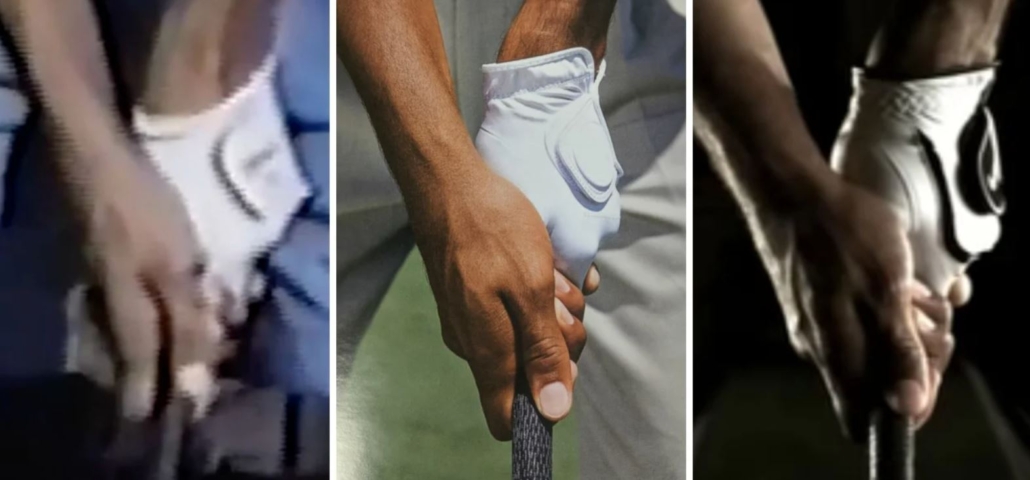
After reading a blog post on Golf WRX by John Wunder, I was surprised to see the names of Pros who use a strong grip.
The list includes Dustin Johnson, Zach Johnson, Fred Couples, Bubba Watson, and Bernhard Langer. A great combination of past and current stars.
Should Seniors Use A Strong Grip?
If you can play with a strengthened grip, I recommend doing so, as it will help you achieve consistent ball speed and promote a draw bias shape.
Admittedly some seniors may struggle to employ a stronger grip. In this case, I recommend that you tick to the Golden Bear’s advice and use an interlocking grip.
The interlocking grip secures the club in your hand, naturally strengthening your grip and control.
Should Beginners Use A Strong Grip?
Beginners may naturally adopt a stronger grip to enhance their control over the club.
For most newbies, it feels the most natural. I am a fan of the average golfer using a strong grip, whether you are a beginner, a mid handicapper, or a superior player.
Should You Use The Same Grip Strength For Ever Club?
The short answer is no. The reason for not using the same grip strength for every club comes down to the type of shot you are trying to play.
If you want to hit a fade, you need to weaken your grip, no matter what club you have in hand. Similarly, if you want to work a draw, you will need to employ a stronger grip.
When it comes to chipping and wedge shots. I may weaken my grip to reduce the power of the launch and land it quick and soft.
Takeaways From A Strong Grip

A closed clubface at impact emanating from an in-to-out swing and a strengthened grip promotes a draw bias shape, ideal for reducing slices.
Furthermore, the increased hold on the club makes it feel lighter, helping golfers swing freely and generate optimal clubhead speed.
Finally, the great coach Harvey Penick believed a strengthened grip was the best option for the average golfer to maximize distance and consistency.
Strong Grip Vs Weak Grip
Strong grip.
As we have learned during this post, a strong grip is ideal for inducing a draw and reducing the risks of slicing your shot.
Furthermore, this grip is comfortable and makes you feel in control of the club.
A strengthened grip enhances the risk of a hooked shot or limited time in the air due to the adjusted clubface loft.
Players who use a weaker grip, often feel less control of their golf club and may swing out-to-in to compensate for their discomfort.
This action prompts the clubface to open at impact, leading to a fade.
However, if your swing mechanics are out of place, you may fall victim to repeated slices.
Conclusion On The Pros And Cons Of A Strong Golf Grip

Diving into the pros and cons of a strong golf grip has highlighted two key factors. Firstly, using this grip helps you reduce the risk of slicing your shot.
And, secondly, it leads to a draw shape, ideal for superior players looking to hit work their ball in that direction.
So, who should use a strong grip? I recommend low, mid, and high handicappers employ a strong grip. You will be grateful for the consistent distance. Unless you are already a serial hooker of the ball, in which case you need to weaken your grip.

Aidan Lehane here, I’m a Mid-low handicap golfer who has made tremendous progress in breaking 90 in just over 1 year of playing golf seriously.
I get out to the course or range as often as possible and review all the equipment I’ve come across on this blog.
© 2022 Amazon Associates Program. Golf Blue Heron is a participant in the Amazon Services LLC Associates Program, an affiliate advertising program designed to provide a means for sites to earn advertising fees by advertising and linking to Amazon.com. *Amazon and the Amazon logo are trademarks of Amazon.com, Inc., or its affiliates.
- Best Golf Products
- Garmin s60 vs Garmin s40 vs Garmin s20
- Golf Driver Comparisons
- Golf Iron Comparisons
- Home Of Golf
- Putt-A-Bout Indoor Putting Mat Review

- Remember me Not recommended on shared computers
Forgot your password?
- Instruction & Academy
Which grip (style) do most PGA pros use?
By mj49 November 11, 2016 in Instruction & Academy
- Reply to this topic
- Start new topic
Recommended Posts
Surprisingly a google or forum search didn't really provide me a good answer. There are so many articles about the pros and cons of each grip style, weak vs neutral vs strong; I'm just curious as to what the most popular style is on the tour? Anyone have this knowledge?
Link to comment
Share on other sites.
- Created 7 yr
- Last Reply 3 yr
Top Posters In This Topic

Popular Days
WILDTHING 2 posts
BrianMcG 1 post
TB07 1 post
mj49 1 post
Apr 12 2017
Nov 11 2016
Apr 13 2017
Nov 12 2016
Strong Vardon. Even pros that advocate "weak" or "neutral" actually use a stronger than neutral grip.
Walter: Tell me Bobby, why do you play this game? Bobby: I play because I love it. Walter: Well I play for the money. I have to win. That is why every time we face each other I will always beat you.
Most are on the stronger side

Seeing pros in person their grips never look nearly as strong as pics and videos depict and are actually pretty weak especially their lead hand. Their ball position also seems much farther forward even with wedges. As for grip style most use an overlap with interlock running second.
- 4 months later...
Why is the Vardon grip used by the majority of golfers? I've heard that it is preferable to allow the hands to work as a unit (whatever that really means) but there is no factual proof that it is superior to any other grip. Is this another example where something has become the conventional norm because 'most people' did it so we should all just follow?
Here is a 'You Tube' video where Steve Elkington shows a trophy he won which was a cast model of Harry Vardon's hands. I think the real reason why Vardon wrapped his pinkie finger around his left index is because he had very large hands and incredibly long fingers (especially his pinkie finger) on 'thin' shafted golf clubs. So it was a physical necessity for him to use his overlapping grip style to suit his hand size.
http://www.youtube.com/watch?v=VK5IcSScvPc
If I look at this from a more logical point of view , the fingers and palm are the only connection we have with the golf club and it makes sense that we need to maximise the surface area in contact with the grip without detrimentally affecting the natural cocking and slinging capability of the wrists. Another advantage for ensuring maximum surface area contact is that we can minimise the pressure (and tension) in our fingers (ie. Pressure = Force per unit area).
So imho , the 10 finger grip maximises the amount of contact while limiting the finger pressure (and unnecessary tension) between the hands and club grip. If someone says you are removing the advantage of the hands behaving like a 'single unit' and introducing inconsistencies , maybe they can provide an understandable explanation.
Why is the Vardon grip used by the majority of golfers? I've heard that it is preferable to allow the hands to work as a unit (whatever that really means) but there is no factual proof that it is superior to any other grip. Is this another example where something has become the conventional norm because 'most people' did it so we should all just follow? Here is a 'You Tube' video where Steve Elkington shows a trophy he won which was a cast model of Harry Vardon's hands. I think the real reason why Vardon wrapped his pinkie finger around his left index is because he had very large hands and incredibly long fingers (especially his pinkie finger) on 'thin' shafted golf clubs. So it was a physical necessity for him to use his overlapping grip style to suit his hand size. http://www.youtube.com/watch?v=VK5IcSScvPc If I look at this from a more logical point of view , the fingers and palm are the only connection we have with the golf club and it makes sense that we need to maximise the surface area in contact with the grip without detrimentally affecting the natural cocking and slinging capability of the wrists. Another advantage for ensuring maximum surface area contact is that we can minimise the pressure (and tension) in our fingers (ie. Pressure = Force per unit area). So imho , the 10 finger grip maximises the amount of contact while limiting the finger pressure (and unnecessary tension) between the hands and club grip. If someone says you are removing the advantage of the hands behaving like a 'single unit' and introducing inconsistencies , maybe they can provide an understandable explanation.
So you think PGA pros use a grip because it is the normal thing to do?

SunkTheBirdie
The grip which is considered ideal has gotten stronger over the last 10-20? years.
Having the Vs point outside the rear shoulder was a real no-no.
Today it's almost encouraged.
It would be fun to track the origins of the Strong Grip is Ideal movement.
Many Hands make Light Work. Many Eyes make Accurate Work. gWRX - the Greatest golf forum on the Internets :).

The grip which is considered ideal has gotten stronger over the last 10-20? years. Having the Vs point outside the rear shoulder was a real no-no. Today it's almost encouraged. It would be fun to track the origins of the Strong Grip is Ideal movement.

If someone says you are removing the advantage of the hands behaving like a 'single unit' and introducing inconsistencies , maybe they can provide an understandable explanation.
1. Less to think about.
Interlocking the hands stabilizes them in relation to each other and gives you one less swing thought. No longer do you have to worry if your hands are in the same position, relative to each other, at the top or impact as they were at setup.
2. Reduces right hand influence.
There is a reason people relax their right index finger, which results (for all practical purposes) in them holding the club with their right two middle fingers. This reduces the influence of their right hand in the swing.
Overlapping also reduces right hand influence.
3. Fights a hook
When I use a mesh (shark style) or baseball grip I hit more balls to the left and have a natural draw.
When I use an overlap I hit more to the right.
The old hickory players were very rotational and naturally hooked. It may be one reason Vardon developed the grip. I'm sure that's why Hogan used it, as he fought a hook.
If you want the feel of more fingers in the grip yet still locking, try Norman's mesh grip.
Thanks Lime Shark - I'd never heard of the mesh grip before but it turns out it's the grip I use.
Interlocking gives me a pain in the trail pinky.
All comments are made from the point of view of my learning and not a claim to expertise.
Many thanks for your explanation as it makes sense. But it begs the question why so many recreational golfers (who normally slice the ball more than hook) continue to use the Vardon grip. Many of the 'greats' learned their game from young using hickory shafts where the clubhead used to torque open , so they had to roll their forearms to close the clubface. This 'rolling' action became problematic for them when steel shafts came into fashion because it didn't torque open as much as hickory so they had to somehow negate the rolling action to stop a hook. That's why the Vardon Grip plus pulling with a dominant left arm action became some sort of norm in golf instruction (to keep that clubhead from closing) but really this was a fix that applied mainly to those 'hickory' players. The right arm dominant swinging action faded into obscurity so now we have a left arm dominant technique action being taught to the multitudes (maybe incorrectly).
I think your point 1 could be the main reason why PGA pros use the Vardon grip.
hoselrocketman
A stronger grip has always been more comfortable for me and probably for most "golfers". This being said, I have noticed and payed particular attention to the relationship of the clubface and the back of the left hand "at the top of the backswing" when I very often go to slow mo or stop action while watching the pros play on TV. The vast majority of them have the clubface and the back of the left hand "matching". This could not possibly be a strong grip. As you may recall, when "fat Jack" was on top of the world, he said he would "aim" the back of his left hand down the target line at impact. These are two examples, to me, that simplify the understanding of the left hand position on the grip. I would call this "neutral" or even "weak" (comparatively speaking). If you are using a strong, 2 or 3 visible knuckle left hand grip, you will be pulling the heck out of the shot if, at impact, you try to get the back of your left hand facing the target because the clubface is closed several degrees relative to the back of the left hand in a strong grip. Am I getting something wrong here?
Join the conversation
You can post now and register later. If you have an account, sign in now to post with your account.

× Pasted as rich text. Paste as plain text instead
Only 75 emoji are allowed.
× Your link has been automatically embedded. Display as a link instead
× Your previous content has been restored. Clear editor
× You cannot paste images directly. Upload or insert images from URL.
- Insert image from URL
- Submit Reply
Recently Browsing 0 members
- No registered users viewing this page.

2024 CJ Cup Byron Nelson - Discussion and Links to Photos
GolfWRX_Spotted posted a topic in Tour and Pre-Release Equipment , April 29

2024 Zurich Classic - Discussion and Links to Photos
GolfWRX_Spotted posted a topic in Tour and Pre-Release Equipment , April 22

2024 RBC Heritage - Discussion and Links to Photos
GolfWRX_Spotted posted a topic in Tour and Pre-Release Equipment , April 15
2024 Masters - Discussion and Links to Photos
GolfWRX_Spotted posted a topic in Tour and Pre-Release Equipment , April 10

Rory McIlroy testing a new TaylorMade "PROTO" 4-iron – 2024 Valero Texas Open
atursky posted a topic in Tour and Pre-Release Equipment , April 3
Popular Now

By RSLP Started February 20
By bogeyczar Started June 30, 2023
Welcome. Register Here.
Come on in, the water is fine...
Recent B/S/T

CRGOLF · Started 40 minutes ago

underwater · Started 8 hours ago
Kurtis4K · Started 8 hours ago
Pens #1 fan · Started 9 hours ago

wrayner · Started 9 hours ago

GolfWRX_Spotted · Started December 5, 2023
- Existing user? Sign In
The Bag Room
- Tour & Pre-Release Equipment
- WRX Club Techs
- Golf Sims/GPS/RFs/Apps
- Golf Style and Accessories
The Club House
- General Golf Talk
- Classic Golf And Golfers
- Courses, Memberships and Travel
- Groups, Tourneys, and Partners Matching
WRX Academy
- Instruction & Academy
- Rules of Golf and Etiquette
- Swing Videos and Comments
Classifieds & ProShops
- Deal/No Deal
Website Help
- Forum Support
- BST AD Help Forum
My Activity Streams
- BST/Deal Activity
- All Activity
- Unread - No BST/19th
- Subscriptions
Classifieds
- For Sale Forum
- Wanted to Buy
- Mall of Pro Shops
- Where Did My Ad Go?
- Trade In Tool
- Create New...
Ben Polland wins PGA pro title; 19 others advance to PGA Championship
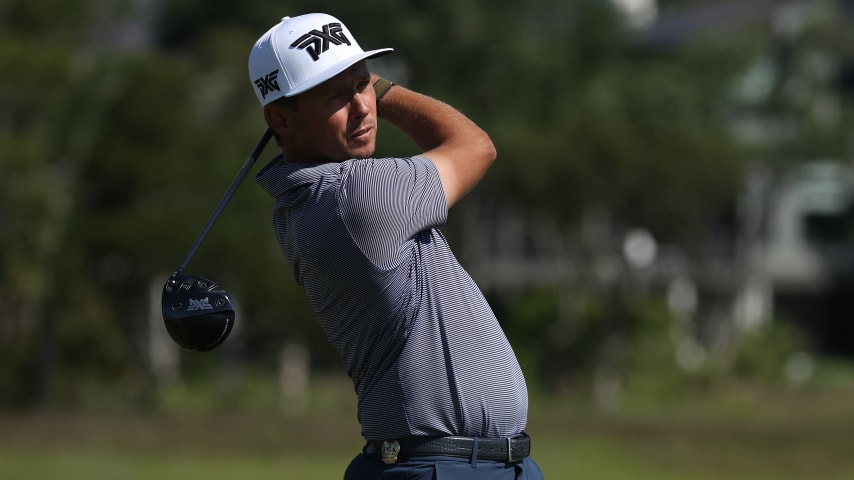
Ben Polland qualified for the 2024 GA Championship. (Gregory Shamus/Getty Images)
Change Text Size
FRISCO, Texas — Wyoming club pro Ben Polland atoned from a crushing loss in 2015 with steady golf in a tough Texas wind, closing with a 4-over 76 for a three-shot victory Wednesday in the PGA Professional Championship.
Polland and 19 other club professionals advance to the PGA Championship on May 16-19 at Valhalla Golf Club in Louisville, Kentucky.
Among them will be Tracy Phillips, the longtime Oklahoma professional who will make his PGA Championship debut in two weeks at age 61.
Wyatt Worthington II of Ohio will be playing the PGA Championship for the third straight year by making it harder than it needed to be. He went from the 36-hole lead to rounds of 78-80 and claimed the 20th spot by making a 4-foot bogey putt on the par-5 18th at Fields Ranch.
Polland, the director of golf at Shooting Star of Jackson Hole, thought he had the PGA Professional Championship won in his debut in 2015. He took a two-shot lead to the final hole and made a double bogey, while Matt Dobyns made birdie for a three-shot swing to win.
“With what happened my first time, I always knew if I kept trying hard, working hard, I’d have a chance,” Polland said. “I can’t believe it’s done.”
He had an early wobble with a double bogey on the par-4 fifth hole. But then, everyone was struggling in a strong field on the West course.
Jeremy Wells of Crystal Lake Golf Club in Estero, Florida, was the only player to break par. His 70 moved him from a tie for 45th to a tie for eighth, earning a spot at the PGA Championship for the second straight year.
As usual, most of the drama was at the bottom in the battle for the final spots.
Braden Shattuck, the defending champion from outside Philadelphia, had not made a birdie the entire round and bogeys on the 16th and 17th hole put him into a large tie for 20th. He reached the green in two on the downwind closing hole, and his two-putt birdie gave him a 78. The birdie also knocked out five players from a playoff that would have decided the 20th spot.
Worthington extended the drama. He needed only a bogey on the 18th hole to secure a spot at Valhalla and hit iron off the tee to play it safe. But in a peculiar decision, he went for the green and came up short into a hazard. He took a penalty drop, hit wedge for his fourth shot some 30 feet long and rolled the par putt 4 feet by.
Worthington made the bogey putt for an 80, pulled his cap over his eyes and breathed a heavy sigh after a rough final 36 holes.
It was the second straight year the PGA Professional Championship did not require a playoff to determine the field of 20 club pros who earn spots at Valhalla.
Phillips is director of instruction at Cedar Ridge in Tulsa, Oklahoma, which has hosted LPGA Tour events. Golf Digest rated him the No. 1 junior in 1979, and he went on to play at Oklahoma State. But after trying to play overseas, he switched to teaching and went 20 years without playing until his desire returned.
He played with Ernie Els in the Senior PGA Championship two years ago and called that a dream come true.
“Now I get to play with the younger guys and hit even more woods into greens than I did this week,” Phillips said. “Just to be able to do this is unbelievable.”
The PGA Championship will have 21 club pros. Michael Block of California tied for 39th at Fields Ranch. He already was exempt for the PGA Championship from finishing in the top 15 last year at Oak Hill.

Winner's bag: Taylor Pendrith's clubs at the 2024 CJ Cup Byron Nelson
T aylor Pendrith won his first PGA Tour title at the CJ Cup Byron Nelson with some strong play - and a miss from Ben Kohles on the final hole. The victory came with a mixed bag of equipment featuring Ping, Srixon, Cleveland and Odyssey clubs.
Take a closer look at Pendrith’s gear setup below.
Driver: Ping G430 LST ( Accra TZ6 shaft), 9 degrees
Ping G430 LST Custom Driver
3-wood: Ping G430 Max (Project X HZRDUS Smoke Green 80 6.5TX shaft), 15 degrees
5-wood: Ping G425 Max (Project X HZRDUS Smoke Green 90 6.5TX shaft), 20.5 degrees
Irons: Srixon ZX5 MKII (4-5; True Temper Dynamic Gold Tour Issue X100 shafts), Srixon ZX7 MKII (4-9; True Temper Dynamic Gold Tour Issue X100 shafts)
Srixon ZX5 MK II Custom Irons
Srixon zx7 mk ii custom irons.
Wedges: Cleveland RTX 6 Tour Rack (46-10 Mid, 52-10 Mid, 56-10 Mid and 60-9 Full degrees; True Temper Dynamic Gold Tour Issue X100 shafts)
Putter: Odyssey Jailbird Versa 380 CS (SuperStroke Zenergy Flatso 1.0 shaft)
Ball: Srixon Z-Star Diamond
Srixon Z-STAR DIAMOND 2023 Golf Balls
Grips: Golf Pride New Decade Multi-Compound
Golf Pride Multi-Compound Plus 4
Want to overhaul your bag for 2024? Find a fitting location near you at True Spec Golf .
The post Winner’s bag: Taylor Pendrith’s clubs at the 2024 CJ Cup Byron Nelson appeared first on Golf .


- Share on Facebook
- Share on Twitter
- Share by Email
Want to start pounding your drives? Learn from the flexed lead wrist of these three pros

Dustin Johnson’s rookie season, 2008, was pretty remarkable. The then-24-year-old notched a win and four other Top 10s, and finished fourth in driving distance with a 309-yard average. We hadn’t seen such raw tee-box power since Tiger Woods in his prime. During that period I was digging into some serious research on the role of the lead wrist during the swing, pouring over 3-D graphs and any and all data I could find. As you can guess, Johnson’s overly flexed (or “bowed”) left wrist at the top of his backswing caught my eye. Instructors had long abandoned teaching this technique, but it was obviously working for Dustin. Was DJ right and traditional golf coaching wrong? Not really.
One of the key learnings of my and other instructors’ research on the lead wrist is that it works, to borrow a phrase, hand in hand with the clubface. Simply, whatever the lead wrist does, the club-face follows. So when elite players flex their lead wrist as they transition from backswing to downswing (and most do), the clubface rotates with it, closing slightly. It’s proof that the lead wrist’s role is fairly significant. Flexing it early in the downswing requires less work on the player’s part to make sure the clubface is properly closed later in the swing. In my opinion, it’s the move weekend players need to add power and put that nasty slice to bed once and for all. The trick? Doing it correctly and consistently.

Your ability to move your lead wrist into a flexed position in transition is largely dependent on your grip. If your grip is too weak (lead hand more on the side of the handle), it’s more likely your lead wrist will move into extension, forming a cup (see definitions below). An extended lead wrist forces the clubface to open, requiring you to drag, flip or roll the club to square it for impact. Weak-grip players like Jordan Spieth and Jon Rahm can do it, but to be honest, recreational golfers lack the natural gifts and sufficient practice time to make it happen.
You’ll enjoy the game more by avoiding lead-wrist extension at all costs during the downswing. Favor flexion. Start by adopting a stronger hold. Get your hands more on top of the handle (rotated to the right for a right-handed player) so that when you look down at address, you can see at least two knuckles on your glove hand. This effectively “presets” flexion in your lead wrist even before you start your swing. The last part of the puzzle: maintaining the flex throughout your backswing and into your transition.
As you practice these moves, keep in mind an important analogy: Your lead wrist is your swing’s steering wheel, but your body remains the engine. The engine can never stall. By taking the correct grip and maintaining lead-wrist flexion deep into your downswing, all that’s left to do on your part is to rotate your body. (Stalling just may produce a hook.) It’s a powerful combination that has propelled Dustin Johnson and others to the top of the golf world. Take these lessons to heart. They’ll take a lot of the guesswork out of your motion. More important, you’ll start hammering the ball instead of swiping at it. That’s when the yards really start piling up.

EXTENSION (TOP)
Your wrist is in extension mode when you pull your hand toward your forearm. The clubface responds by opening.
FLEXION (BOTTOM)
Your wrist is in flexion mode when you bow it like Dustin Johnson and most elite players. The clubface responds by closing.
Flex, Flex and Rotate
Dustin Johnson starts with a strong grip, which facilitates flexion in his wrist early in his swing. He then creates even more flexion in his wrist on the downswing, and squares the face by rotating his body aggressively through the ball. It helps him generate a ton of speed without moving the clubface around excessively.
ADVERTISEMENT
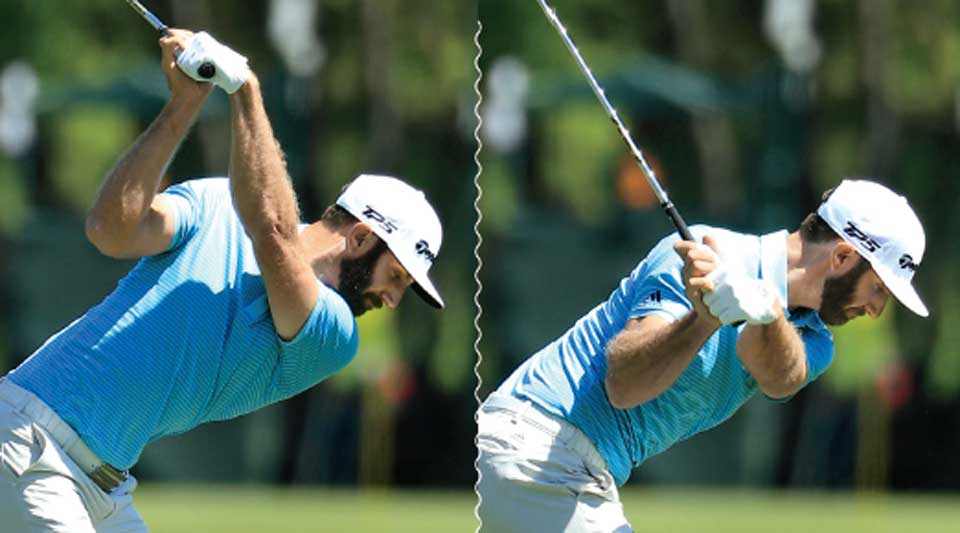
Extend and Flex
Hard-hitting rookie Matt Wolff’s lead wrist extends during his backswing, the result of the clubhead tracking outside his hands in the takeaway. Because of this he has to flex his lead wrist like crazy in the transition. His beautiful timing results in a square face at impact. Not every golfer has it.
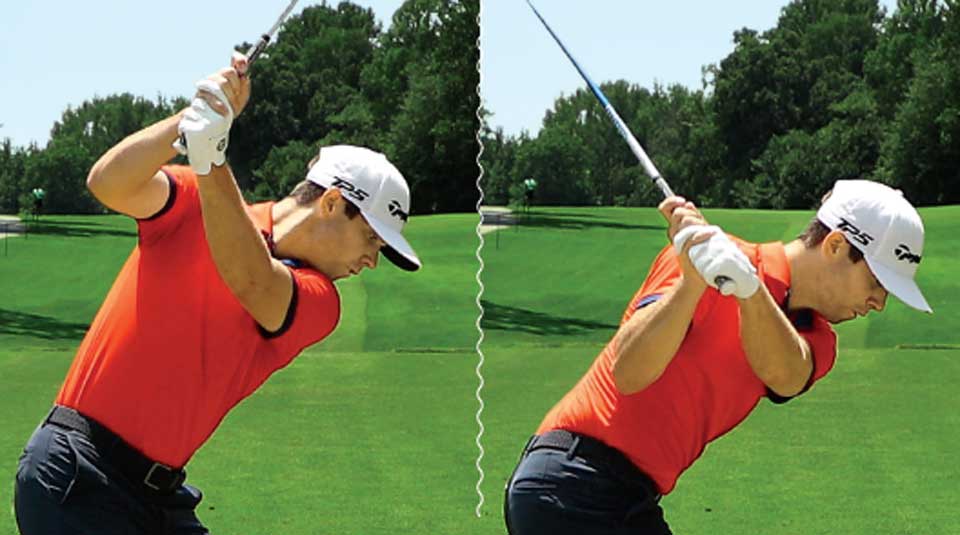
Flex and Maintain
The three-time PGA Tour winner opts for a slightly weaker left-hand grip, so he really has to flex his lead wrist on the way to the top (and do it quickly considering his shorter-than-normal backswing). Once set, the powerful Spaniard focuses on maintaining the flex and rotating through the shot, which stabilizes the clubface. If you prefer a weak hold, Rahm is your model.
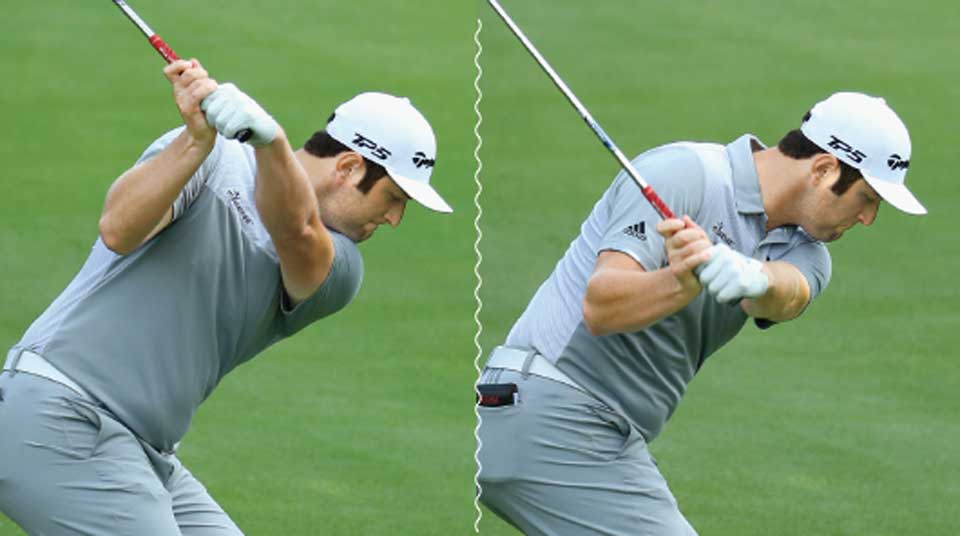
To receive GOLF’s all-new newsletters, subscribe for free here .
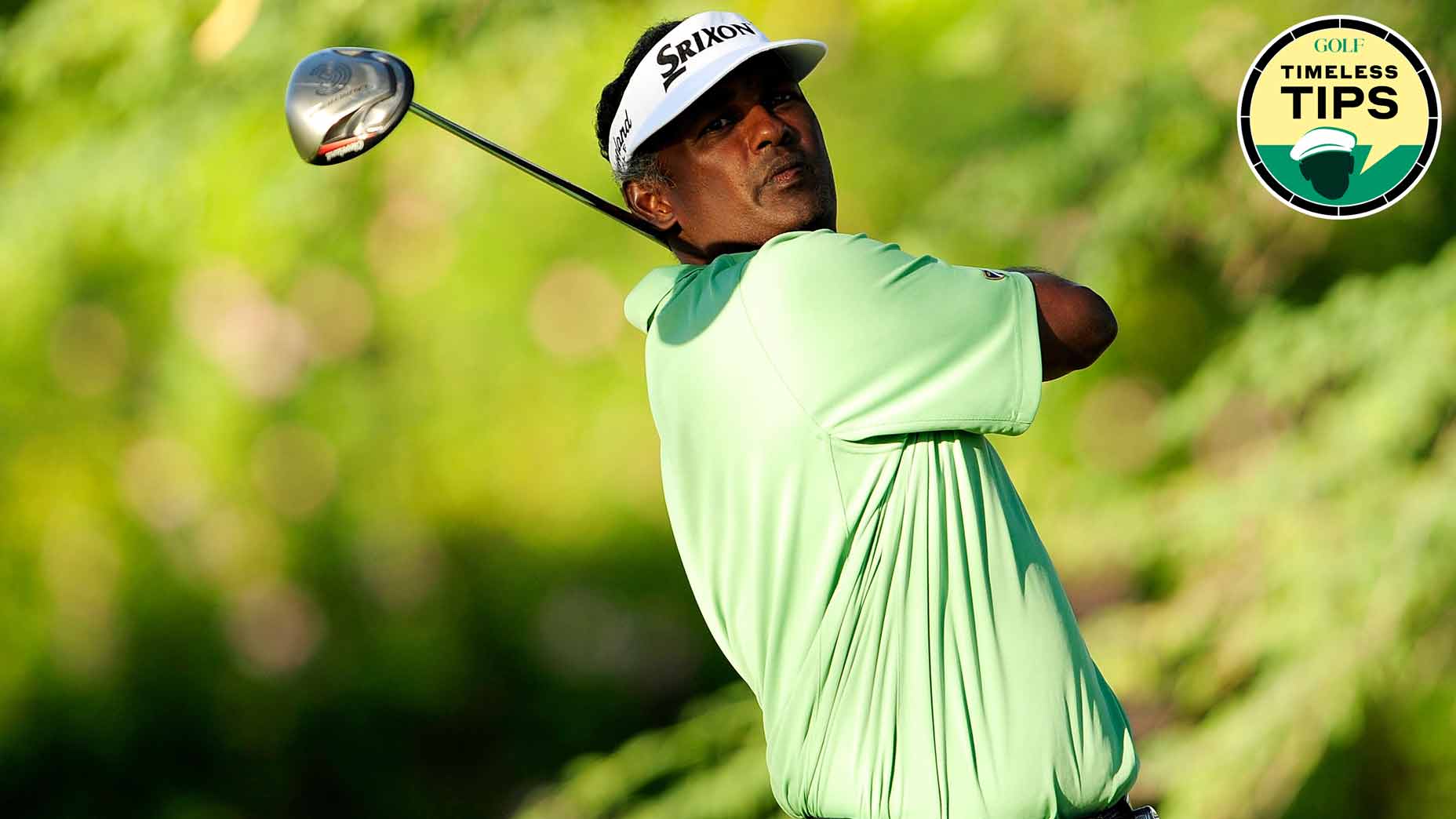

IMAGES
VIDEO
COMMENTS
Golf Pride grips are the most used by the top 100 PGA Tour pros with 86% choosing them. Lamkin grips, used by Tony Finau and Justin Rose, are the next most common chosen by 6. IOMIC grips are picked by 4 pros while SuperStroke are used by Jordan Speith and Joel Dahmen. PING and Gripmaster grips are used by only 1 pro each.
The list of players on tour with strong grips is long: Dustin Johnson, Zach Johnson, Bubba Watson, Fred Couples, David Duval, and Bernhard Langer all play with a strong grip. ... PGA Tour pro hits out at decision to hand Adam Scott and Webb Simpson Bay Hill sponsor exemptions. WITB. Whats in the Bag 11 hours ago. Max Homa WITB 2024 (April)
Spieth's grip is one of the more interesting ones on tour--a derivative of the standard overlapping grip 98 percent of PGA Tour players use and the interlock used by Jack Nicklaus and Tiger Woods.
Stephen Munday. But some of the most interesting grips on tour today aren't just a straightforward "strong" or "weak," where both hands match each other and are turned to the same degree. "The ...
In most weeks on the PGA Tour approximately 30 players use a SuperStroke grip. ... Converting the curiosity to usage has led more than 125 players to use SuperStroke grips across the pro tours ...
Having swapped clubs in and out of my bag over the last number of years I have now ended up with different golf grips on my driver and fairway woods, compare...
Golf Pride MCC Plus4 Grip. $11.99. The MCC Plus4™ is a tour-proven, hybrid golf grip featuring a larger lower hand and new softer rubber material. The MCC Plus4 simulates 4 additional wraps of ...
By employing a stronger grip, tour pros are able to generate increased clubhead speed, which translates into longer drives off the tee. The power generated from a stronger grip allows these players to achieve remarkable distances that set them apart from their peers. However, it is crucial to note that while a strong grip can lead to impressive ...
First thing's first, you want the clubface pointing towards the target, and it's easier to get a good visual of that with the club raised off the ground. Check Ben's demonstration in the video above for more detail. From there, you want the grip to run through the pad of your lead hand.
RIP. Today's equipment, and courses, have changed our approach to the game. Thus my efforts, these past months, to strengthen my grip and increase clubhead speed, especially on the downswing ...
Empty List. Japanese Masters champion Hideki Matsuyama uses Iomic X grips at the moment. Available in several different colors they feature a more rounded profile to enable the grip to fit into the palms correctly, reducing grip pressure. For more Tour player gear, check out the Golf Monthly website.
Golfers who love the weak grip claim that it helps them hit the ball a lot higher than the other two grips. PGA Tour pros like Jon Rahm use the weak grip to hit those long, power fade drives. A weak grip normally works well for golfers with slow hips. Neutral Golf Grip. The neutral grip is a happy medium between the weak and strong grips. With ...
After another exhausting research project on over 200 PGA tour pros, I have found that the grip that is most commonly used, is what we would once have termed a "strong grip." At least 60% of the tour pros use this grip so I'm going to call it the "standard strong" grip. Then there are about 20% that use an extremely strong grip or as ...
1.Dustin Johnson Grip. The 6'4" athlete is best known for his prodigious driving distance, but he's an underrated putter. On the greens, Dustin Johnson's grip is - believe it or not - quite conventional. The only slight oddity in his reverse-overlap grip is a right hand that's a little stronger than his neutral left.
Here's how it came out, with some thoughts on what might be best for you. 1. Conventional, 48 players (68.5 percent) The most common grip on tour is the conventional, reverse overlap golf grip ...
PGAClubTracker.com is the internet database for golf nerds who want to see the golf clubs in the bags of PGA Tour pros right now. ... Most Popular Grips Played on Tour. Which Grip brands and models are the most popular with the pros? Most Popular Grip Brands Played on Tour: Brand # of Tour Players; Golf Pride: 110: SuperStroke: 41: Lamkin: 9 ...
Strokes gained/putting. The 24 players who used a cross-handed grip this season averaged the best strokes gained/putting rank compared to all other methods. Their average rank was 69, compared to ...
The strong grip has been classified as "strong" due to the effects it has on the clubface and the wrist action during the swing. Notice how the hands are both positioned well right of center, and ...
Photo 2: This is the conventional "neutral" grip that is considered ideal, with the left thumb running down the center of the handle and joined with the base of the right thumb pad.. Why it's a problem for amateurs: While a slightly strong grip can promote a free release of the club through impact, Azinger's style would be too much of a good thing for most golfers.
This section puts forth three brands that you can buy grips from. The grips made by the following companies are used by Tour players. The most popular grips on the PGA Tour are: Golf Pride Tour Velvet - 28 grips used on Tour. Golf Pride MCC - 11 grips used on Tour. SuperStroke Pistol GT - 7 grips (different iterations) used on Tour.
Optimized Power. According to Golf Week's Mike Southern, a stronger grip makes the club feel lighter and easier to handle on your backswing. That helps you to optimize your clubhead speed and transfer it to your ball speed. Resulting in a powerful launch and maximum distance. From my own experience, a stronger grip helped me achieve a ...
This type of grip would promote a less closed club face through impact as well as a more out-to-in swing. A weaker grip can help players who struggle with hooked shots by promoting a club face ...
Golf balls that don't spin like crazy off the driver. If still using tiny drivers with heavy steel shafts, I just don't see how the extra strong grips become popular. Tennis has had the same thing. More powerful rackets with better strings, and now the pros are using small handles with very strong grips to impart crazy spin.
Written by Associated Press. FRISCO, Texas — Wyoming club pro Ben Polland atoned from a crushing loss in 2015 with steady golf in a tough Texas wind, closing with a 4-over 76 for a three-shot ...
The mixed-gender event will have a team-play format consisting of one LPGA pro and a PGA Tour Pro. The first two rounds will be in scramble and foursomes (alternate shot), the third and final ...
T aylor Pendrith won his first PGA Tour title at the CJ Cup Byron Nelson with some strong play - and a miss from Ben Kohles on the final hole. The victory came with a mixed bag of equipment ...
The three-time PGA Tour winner opts for a slightly weaker left-hand grip, so he really has to flex his lead wrist on the way to the top (and do it quickly considering his shorter-than-normal ...